SPOOKTACULAR
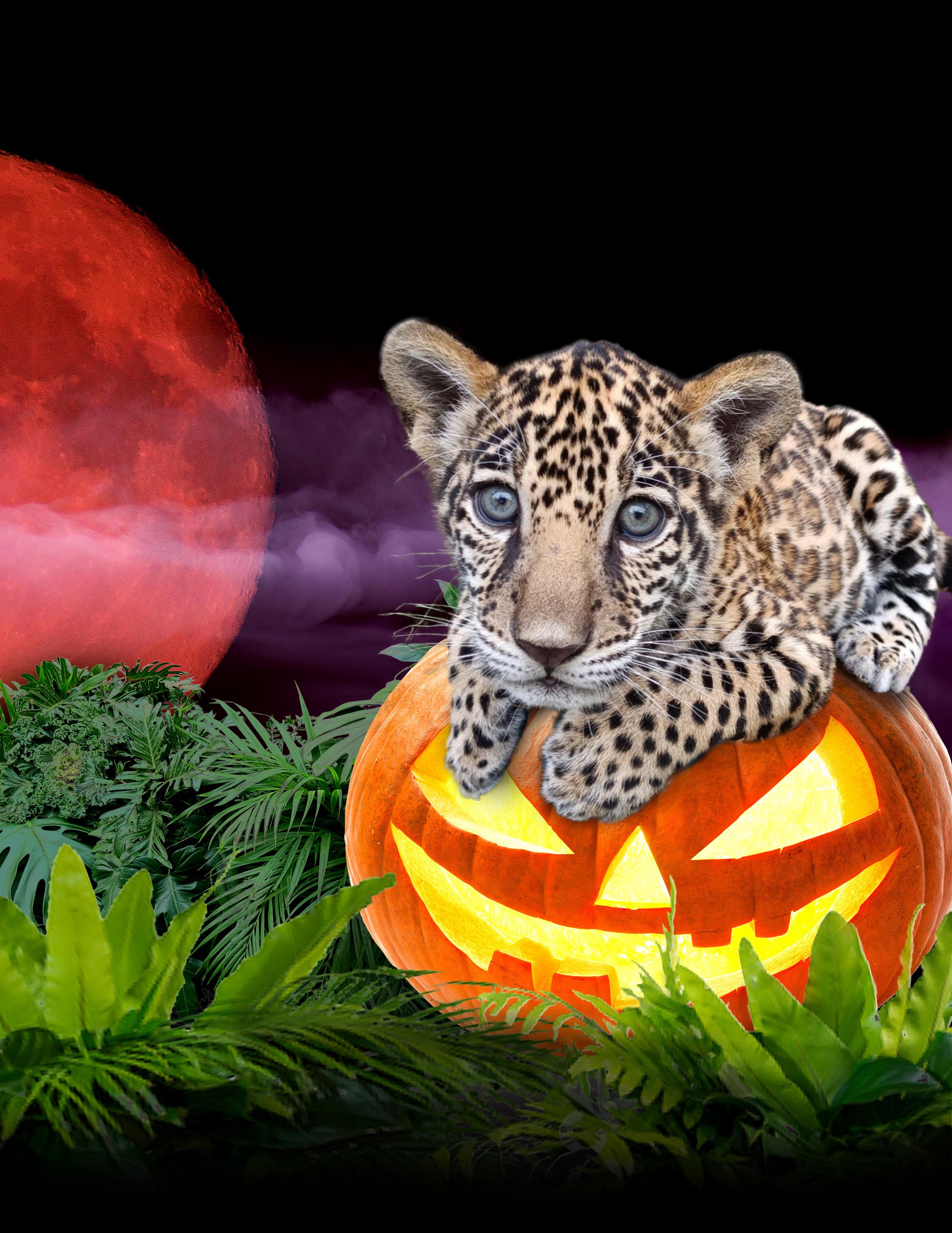
STINGRAY WELLNESS
WETLAND WONDERS
PUERTO RICAN CRESTED TOAD CONSERVATION
FALL 2023
Baby Banks
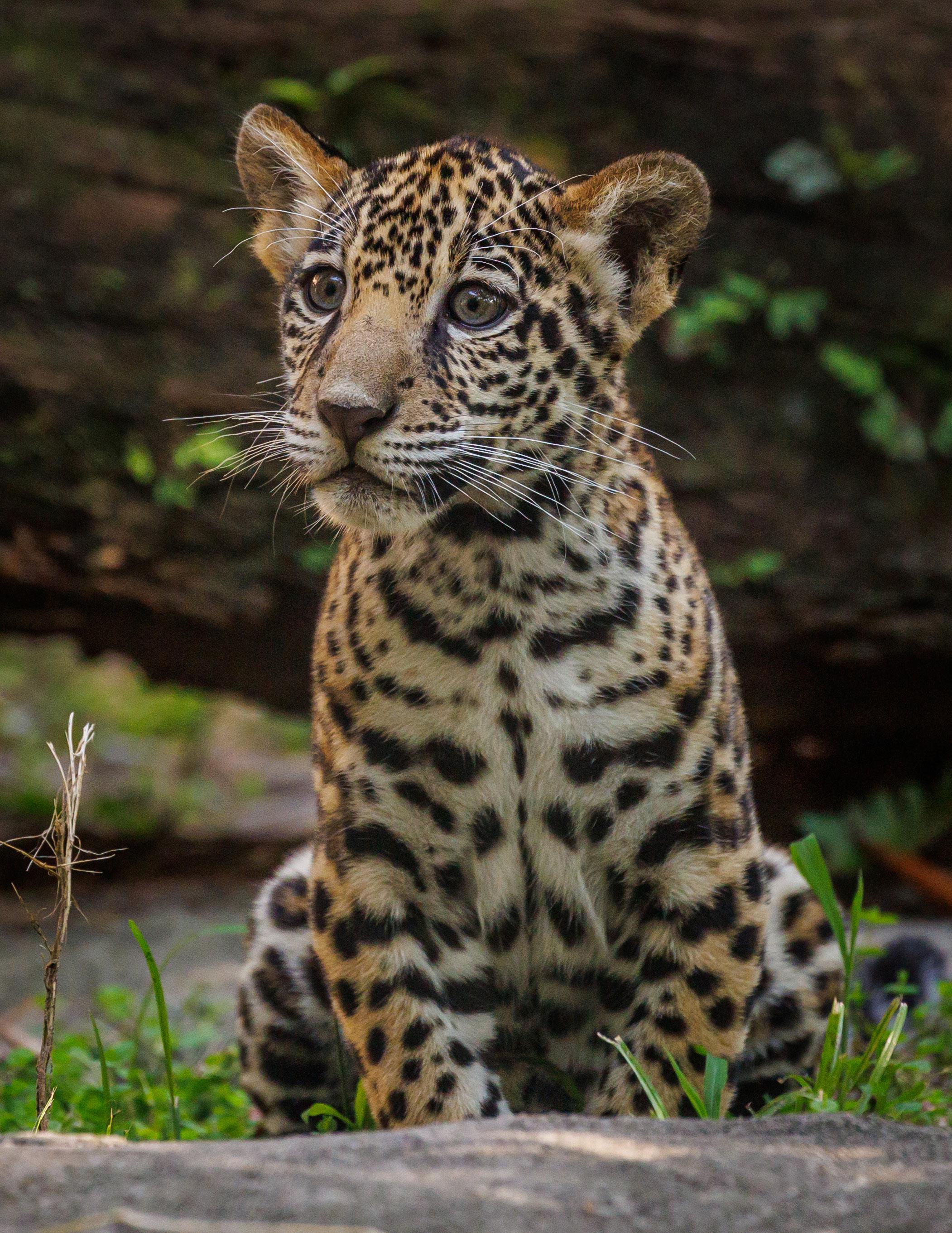
Videos page 15
Photographs page 22
Photo: John Reed
2
4
Annual Meeting
Acquisitions
15 JAX Zoo Tube
16 Conservation: Puerto Rican Crested Toad
18 AIP Graduate Students
20 Education Event Calendar
22 Animal Highlights: Banks—Jaguar Cub

24 Snapshot Society
Coming
Wetland Wonders
STRATEGIC OPERATIONS TEAM
Jeff Ettling, Ph.D., President and CEO
David Hagan, Chief Life Sciences Officer
Holly Ellis, Chief Financial Officer
Nikki Smith, Chief Philanthropy and Community Engagement Officer
Paula Shields, Chief People and Culture Officer
EXECUTIVE COMMITTEE
Lucia Lindsey, Chair
Kelly Coker-Daniel, Secretary
Anne Marie Cushmac, Vice Chair, Governance
George Mikes, Treasurer/Vice Chair, Finance
Missy Peters, Vice Chair, TBD
Paula Renfro, Vice Chair, Education
Paul Sandler, Vice Chair, Philanthropy
Karen Estella Smith, Vice Chair, Gardens & Art
Kerri Stewart, Vice Chair, Special Projects & Properties
Salmaan Wahidi, Vice Chair, Animal Care, Conservation & Wellness
John Hayt (Honorary Advisor)
25 Garden Highlights
26 New Behind the Scenes Experiences
GENERAL BOARD
Ken Amaro (COJ, Alternate)
Scott Chamberlayne
Jonathan Coles
Donna Deegan (COJ)
Kenyonn Demps
Dan Fields
Mike Gay (COJ)
Chuck Ged, Past Chair
Wilfredo Gonzalez
LeAnna Gutiérrez
Cumber
René Kurzius
Barnwell Lane
Pamela Phillips
Clint Pyle
Param Sahni
Joel Swanson
Scott Witt
HONORARY BOARD
Danny Berenberg
Ivan Clare
Dano Davis
Herbert Peyton
Clifford Schultz
Frank Surface
Janet Vaksdal Weaver
HONORARY PAST CHAIRS COUNCIL
Martha Baker
J.F. Bryan
Carl Cannon
Howard Coker
Charles Commander
Jed Davis
Matt Fairbairn
Joseph Hixon
J. Michael Hughes
Lewis Lee
David Loeb
Richard Martin
Frank Miller
John A. Mitchell
Thomas Schmidt
Bill Rowe
Carl “Hap” Stewart
James Stockton
Penny Thompson
Diane David
Lenore McCullagh
Elizabeth Petway
Page 12 WILD MAGAZINE • FALL 2023 • JACKSONVILLE ZOO AND GARDENS 1
Who's Who
Spooktacular
Courtenay Wilson Stingray Wellness
6
Heart of the Zoo
8
9
10 What's New: Births, Hatchings,
Soon: Natures
12
Nightlights
Nature Agents
13
14
Table Of Contents
WHO'S WHO AT THE ZOO
Dorrie Jackson
Congratulations of 35 years
How long have you worked at the Zoo?
35 years
What were your previous jobs/career paths and how did they lead you here?
I had many jobs; I started working when I was 17. I worked at a place that made men and boys pajamas. Then, I started working at a place called Stromburg Carlson testing diodes for electronics like computers. After that, I worked for a gas station, Pick ‘n Save and a telemarketing company selling magazines. I didn’t love that job, and thankfully the Zoo still had my resume on file from when I had previously applied.
They called me one day while I was at the telemarketing job asking if I was still interested in working for the Zoo. I started working here an hour after that phone call. And that’s how it started!

What does a day in your shoes look like?
I serve the guests and wait on them. If I see unhappy children, I try to make them happy. If I see parents that are stressed because their kids are misbehaving, I go have a conversation with them, and hopefully by the time they cash out, they will feel better.
2 WILD MAGAZINE • FALL 2023 • JACKSONVILLE ZOO AND GARDENS
What is your favorite animal?
All of them! If I had to choose, I’d have to say baby Banks. He’s so adorable.
What is your favorite exhibit?
I love everything about the Zoo, but I really enjoy the gardens.
When or how did you first develop an interest in animals/the zoo world/education?
I’ve always loved all kinds of animals, but I wanted a job that would treat me well, and I didn’t make a mistake by working here. I’ve been treated so well.
Are you native to Florida? If so, where? If not, where did you grow up?
Yes, I was born and raised in Sanford, Florida. I moved up here for a job opportunity.
What is your favorite part of your career or what is your most memorable experience at the Zoo (or your old zoo)?

I love to meet all the guests, especially the kids. I’m not a grandmother yet, so I think of the kids as my adopted grandchildren. I’ve seen the kids grow up to have children of their own. I love interacting with people and making them happy.
What do you like to do in your free time?
Watch TV and relax! I love to watch crime shows like Law & Order and Criminal Minds.
WILD MAGAZINE • FALL 2023 • JACKSONVILLE ZOO AND GARDENS 3
Buy Member Tickets
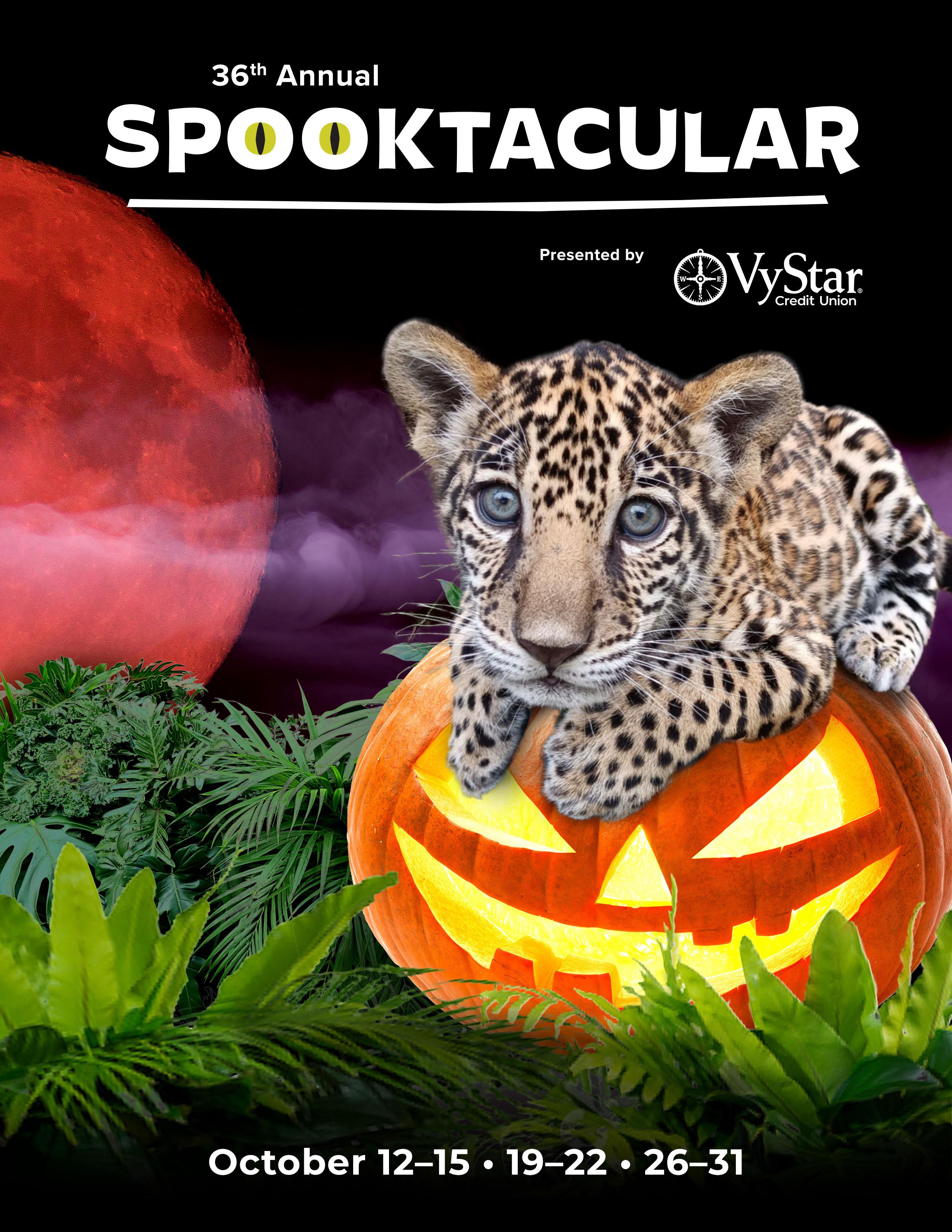
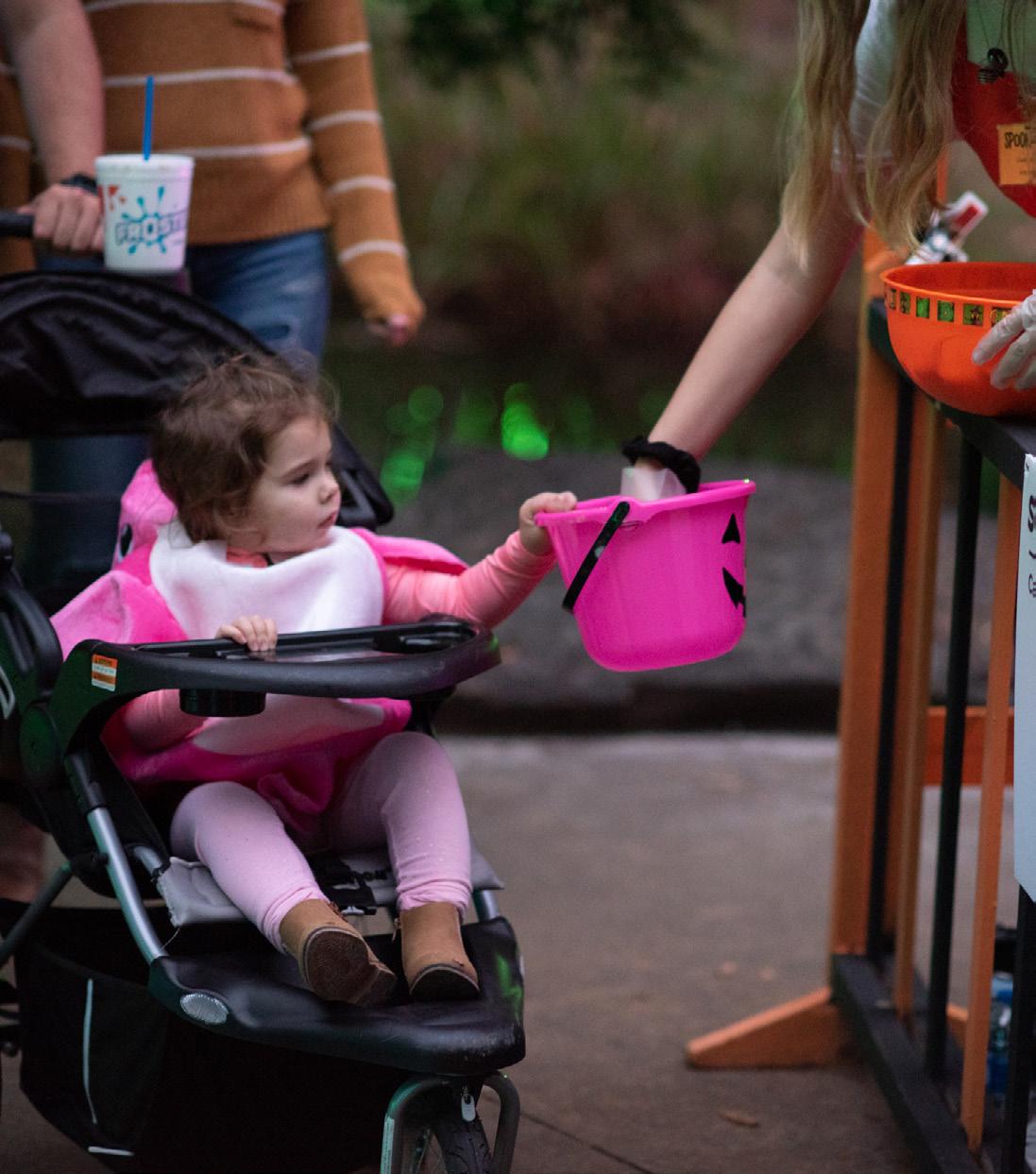
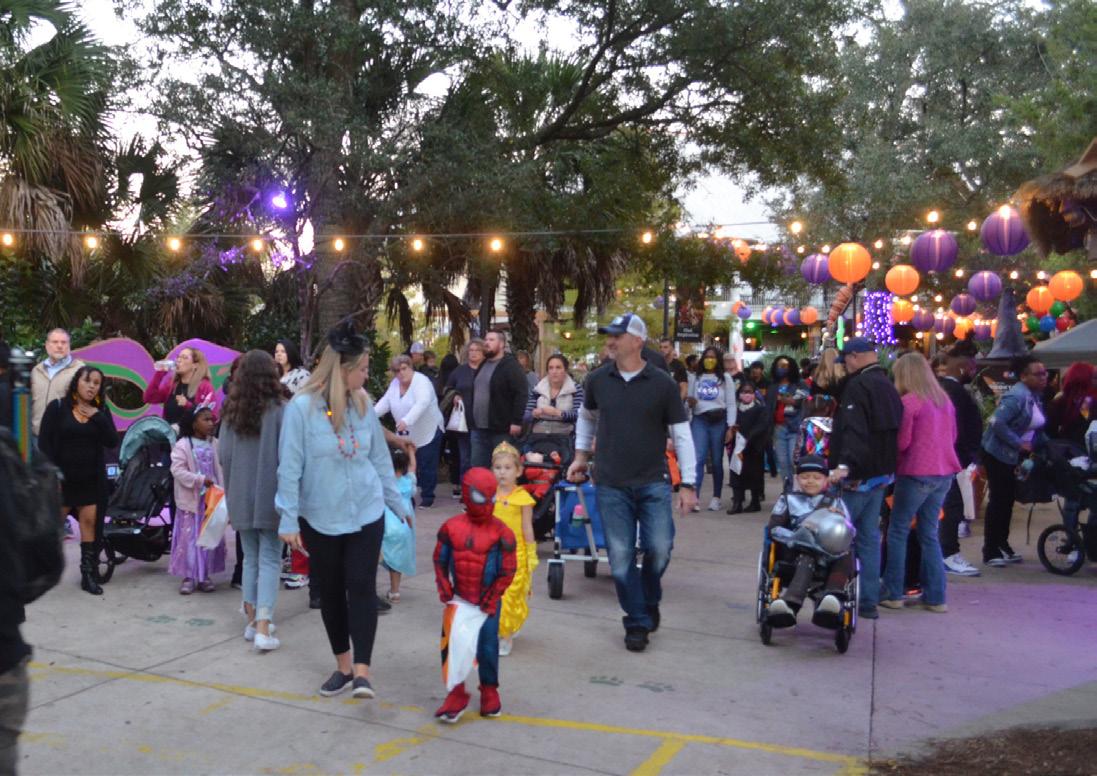
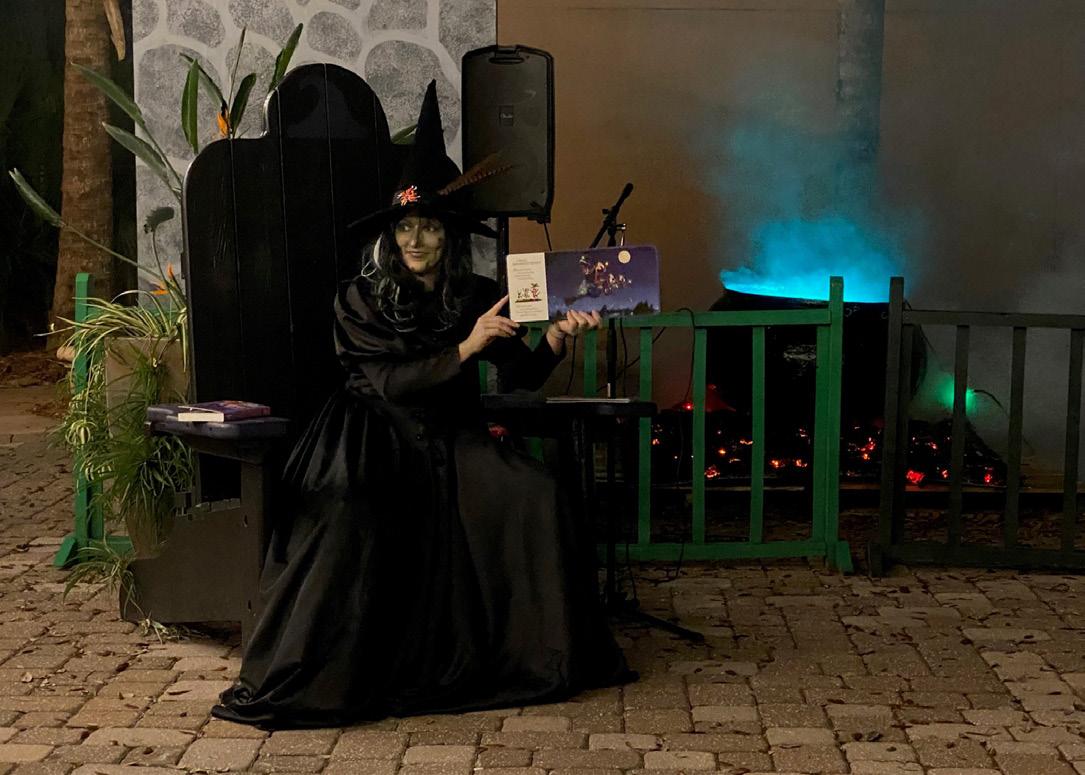

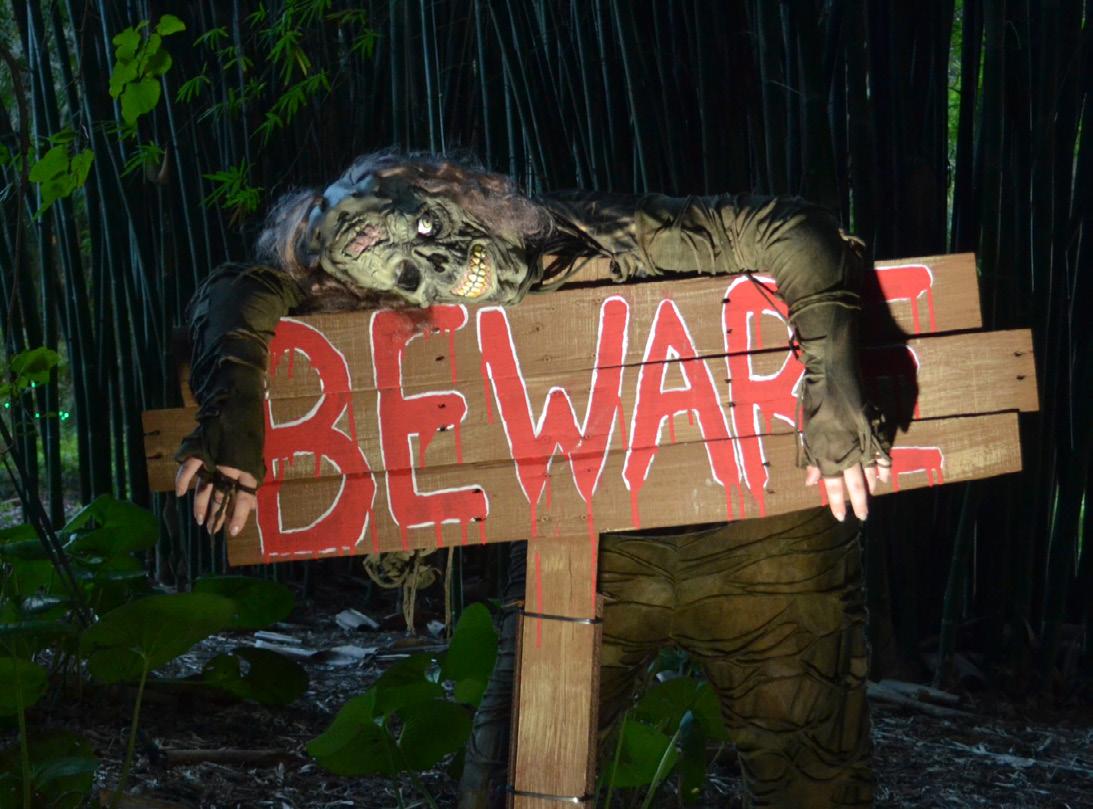
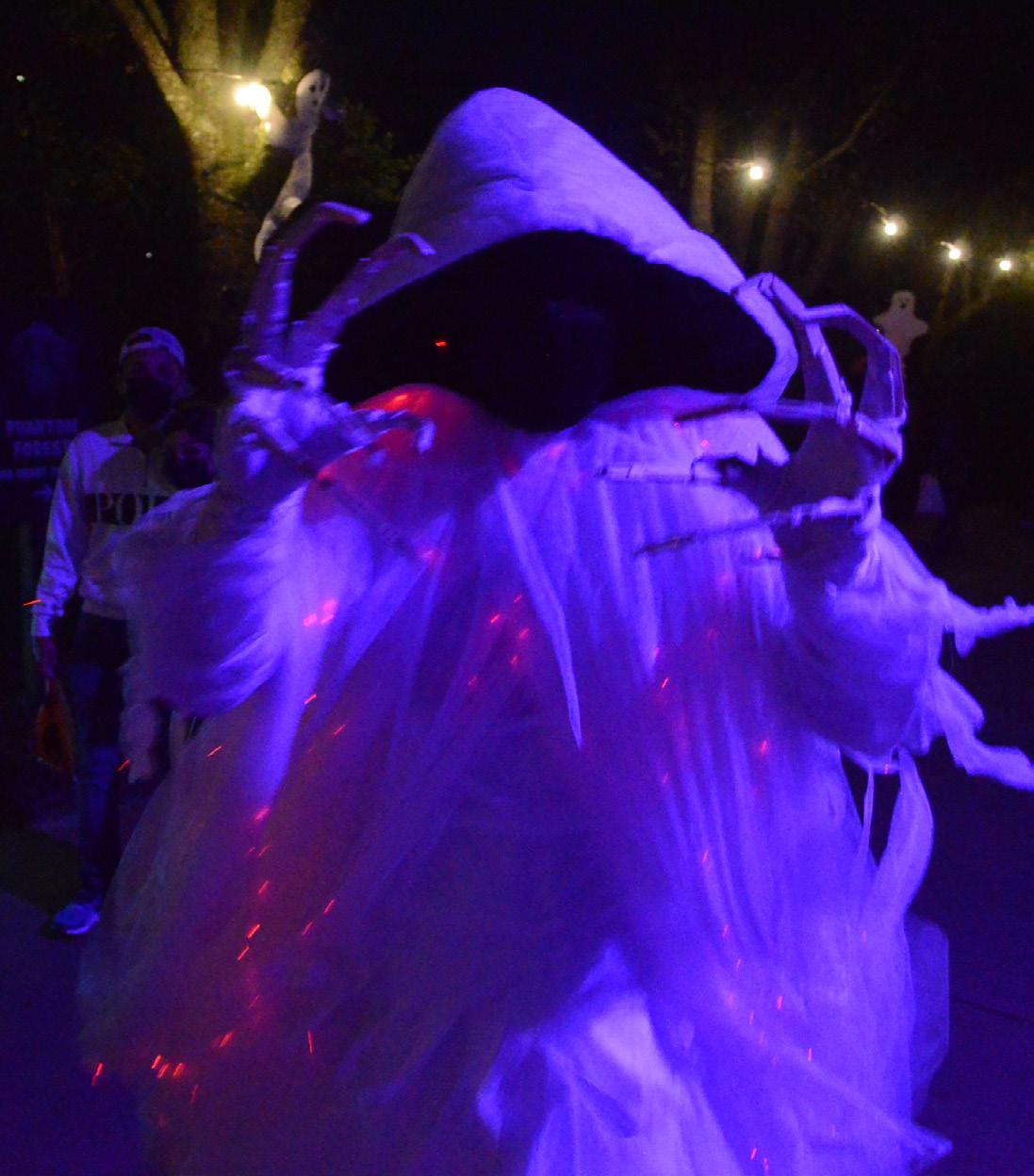
WILD MAGAZINE • FALL 2023 • JACKSONVILLE ZOO AND GARDENS 5
ANIMAL HEALTH
Stingray Wellness
By Aimee Little, Applied Animal Wellness and Research Officer
If you have visited Stingray Bay in the last few months, you may have noticed changes to the area. But did you know these changes were inspired by novel animal behavior research conducted by both Zoo staff and graduate students from the University of North Florida (UNF)?

Aquatic touch pools are one of the most popular habitat designs in zoos and aquariums all over North America. They were first designed to help educate people about marine invertebrates like sea stars, but institutions quickly recognized the potential of these habitats by bringing “fingers to fins.” Tactile experiences like touch pools are considered powerful educational tools that can foster conservation engagement. Sharks and rays are important keystone predators in aquatic ecosystems, but many species are threatened or endangered due to anthropogenic factors like overfishing and pollution. Sharks, in particular, faced severe population declines in the 1970s and 1980s due in no small part to the public fear of sharks sparked by Steven Spielberg’s blockbuster, Jaws, based on the best-selling book by Peter Benchley, the late author-turned-ocean conservationist. In response, touch pools are utilized to provide more education about sharks and rays by replacing fear with fascination and respect through a fun, interactive experience.

6 WILD MAGAZINE • FALL 2023 • JACKSONVILLE ZOO AND GARDENS
However, even though touch pools are common in zoos and aquariums throughout the country, scientists are still learning more about shark and ray behavior to ensure that nearly 500 different species can thrive both in the wild and in human care. At the Zoo, the animal wellness and research teams conduct research to ensure that all animals living in our care from great apes to invertebrates have opportunities to thrive and experience positive wellbeing.
Achieving positive animal wellbeing starts with a good understanding of each species' unique needs and preferences. Research is an important tool that increases our knowledge of animals and what makes them thrive. In the case of the rays living at Stingray Bay, animal care staff wanted to better understand their behaviors, including how they interacted with each other and with the people who come to visit them. Are the rays getting along with each other? Which individuals like to spend time with each other the most? How much do the rays like interacting with people, and do some individuals like interacting with people more than others?
These were the questions the wellness and research team set out to answer. Through a unique partnership between the Zoo and UNF, our team can host a graduate student fellow from either the Psychology or Biology Departments to conduct their thesis research at the Zoo. Student research on the rays first began with my own thesis research in Fall 2020 to better understand how rays interacted with people, and how those interactions may be influencing the rays' interactions with each other.

The data showed that the cownose rays at Stingray Bay seek out interactions with people more compared to the other species (Atlantic Guitarfish, Atlantic Stingray, Bluntnose Stingray), and their behavior suggests they prefer interactions with people when they use a calm and gentle touch. Do you ever get that feeling of needing some alone time after hanging out with friends or going to a big party? Well, the data suggested that even the rays sometimes need alone time, too especially on busy days when a lot of people visit them. So, with this knowledge in hand, the animal care and education teams worked together to make modifications to Stingray Bay. When you visit Stingray Bay, you will hear interpretative guides providing instruction on using two fingers as a form of calm and gentle touch. You will also notice that the rays now have an area where they can choose to spend time and take a break from interacting with people if desired. Now, another UNF student, Kendal Rogers, is investigating the social relationships among individual cownose rays and if their place in the social hierarchy of the touch pool influences how much they seek out interaction with people and other features of their habitat (such as enrichment). This new study provides an opportunity to not only conduct novel social network research, which has never been done in a human-managed population in an AZA-accredited facility, but it also enables staff to observe how the changes made at Stingray Bay impact ray behavior. With this new research concluding in June 2023, we are excited to learn the everyday social dynamics within Stingray Bay and how it contributes toward positive animal wellbeing for the rays. Not only does this information benefit the Zoo, but it has the potential to help zoos and aquariums across the country provide the best care possible for sharks and rays living in aquatic touch pools.
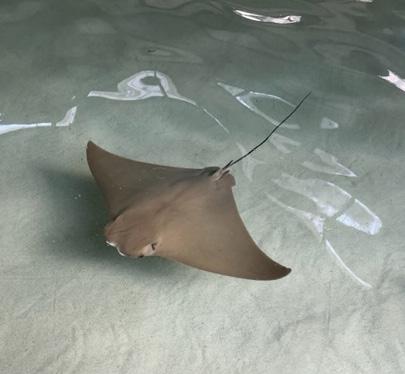
WILD MAGAZINE • FALL 2023 • JACKSONVILLE ZOO AND GARDENS 7
UNF student, Kendal Rogers, is investigating the social relationships of cownose rays.
Receive special benefits by supporting the Zoo's mission of conservation and education.
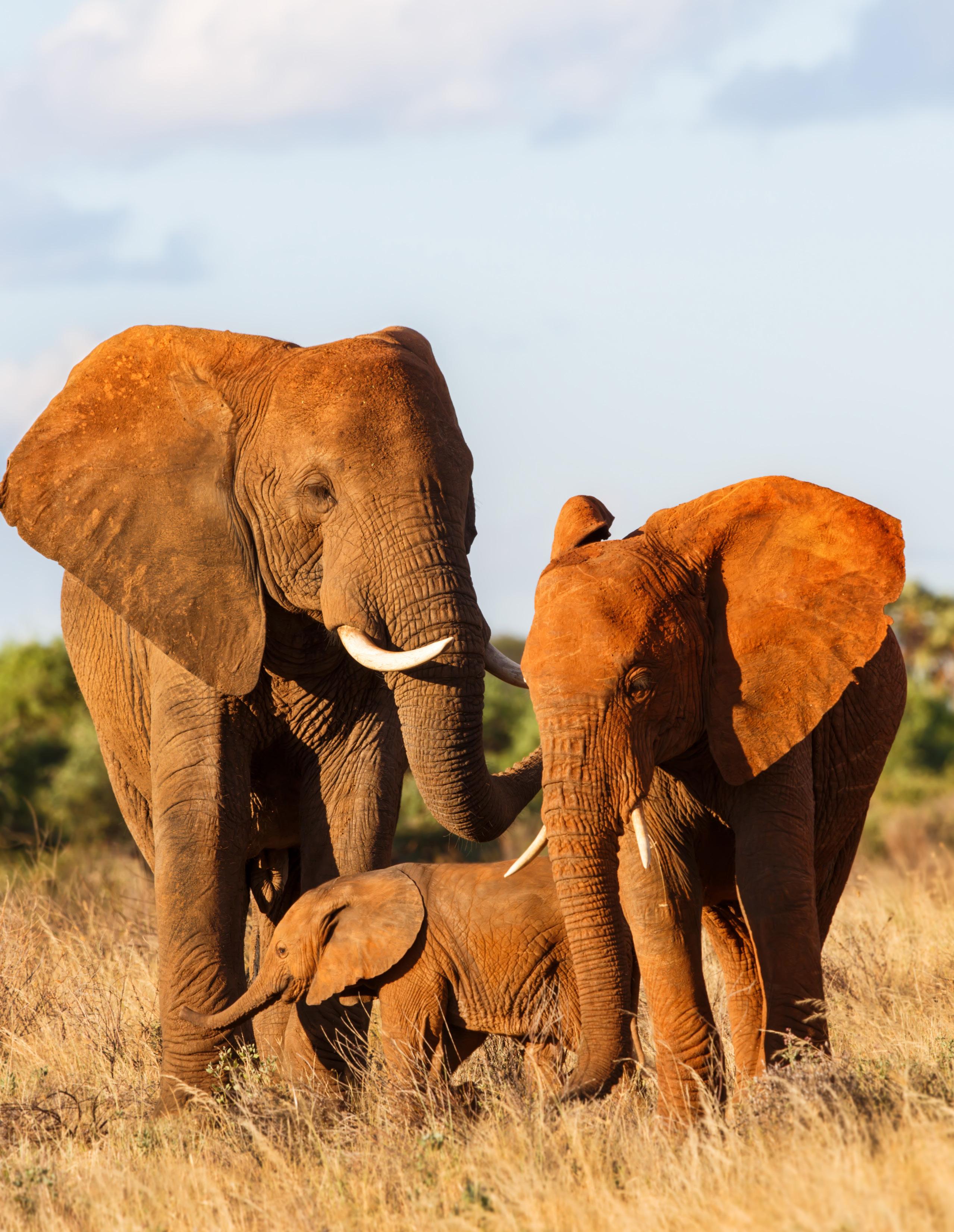
8 WILD MAGAZINE • FALL 2023 • JACKSONVILLE ZOO AND GARDENS
Learn More
Jacksonville Zoological Society cordially invites you to the 2023 Annual Meeting

October 18, 5 – 6 p.m.
Samburu Room
Jacksonville Zoo and Gardens
All members are invited to attend the annual Board of Directors meeting where you can hear our President & CEO, Dr. Jeff Ettling recap the year and provide updates on the Zoo’s future.
RSVP by October 3
hausera@jacksonvillezoo.org
Include your name and number of guests attending.
Photo: John Reed
Births, Hatchings, Acquisitions
By Donna Bear, Curator of Species Management and Jasmine Alvarado, Species Management Officer
Black-faced ibis
(Theristicus melanopis)
The black-faced ibis joined our animal population in 2016, and we have been successfully breeding them since 2019 with 17 hatchlings. The black-faced ibis is one of the most adaptable species among the spoonbills and ibises in regard to nesting. A pair may nest alone or in a colony, which can vary in size (10 to 50 pairs) and location (forest glades, rocky gullies, open country, etc.). They have been spotted nesting on tree stumps and other emergent sites in the middle of a marsh or flooded area. Other nest sites include reedbeds on rocky outcrops or cliff ledges and the occasional woodland tree. Each clutch can have between two to three eggs. As chicks, their down is grey before feathers come in a buff brown color from the neck up. Come and find these birds at the Emerald Forest Aviary.
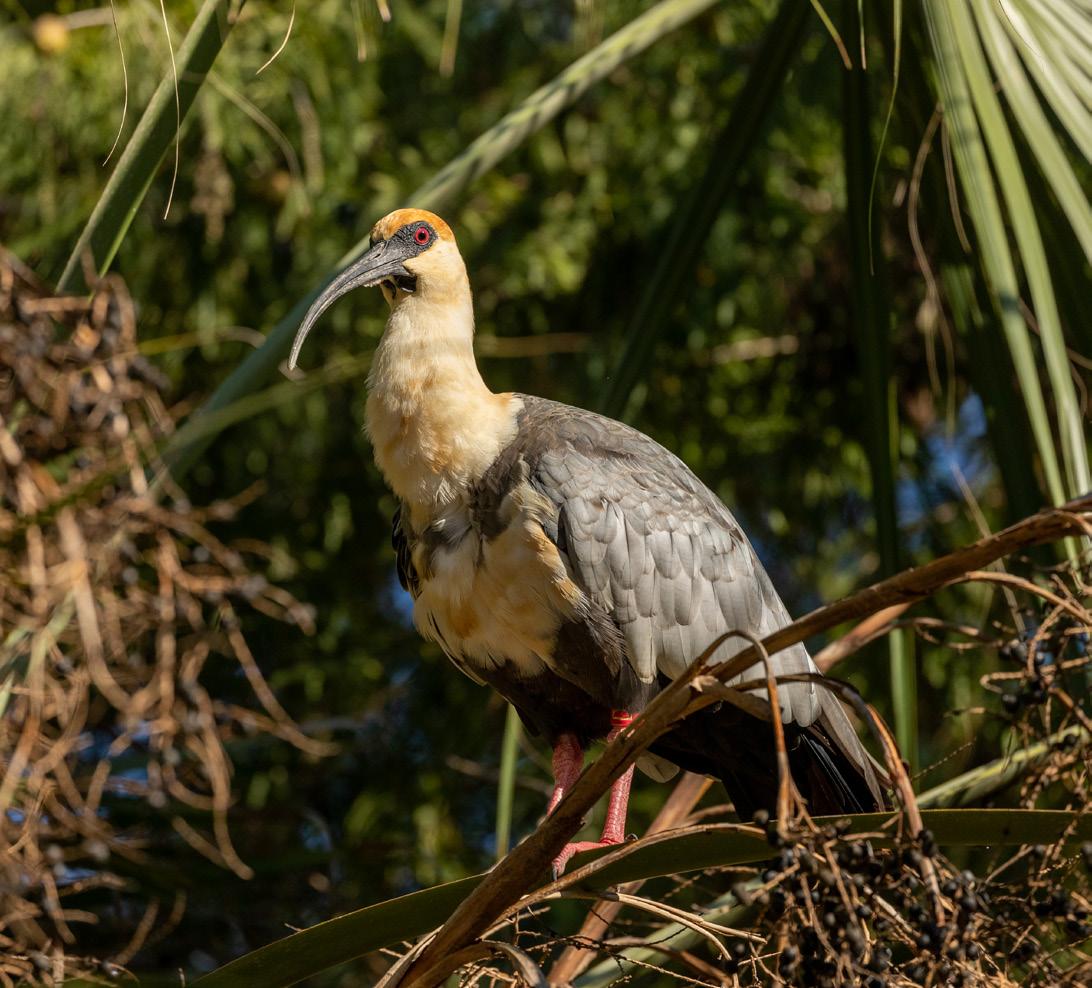
Mongoose lemur
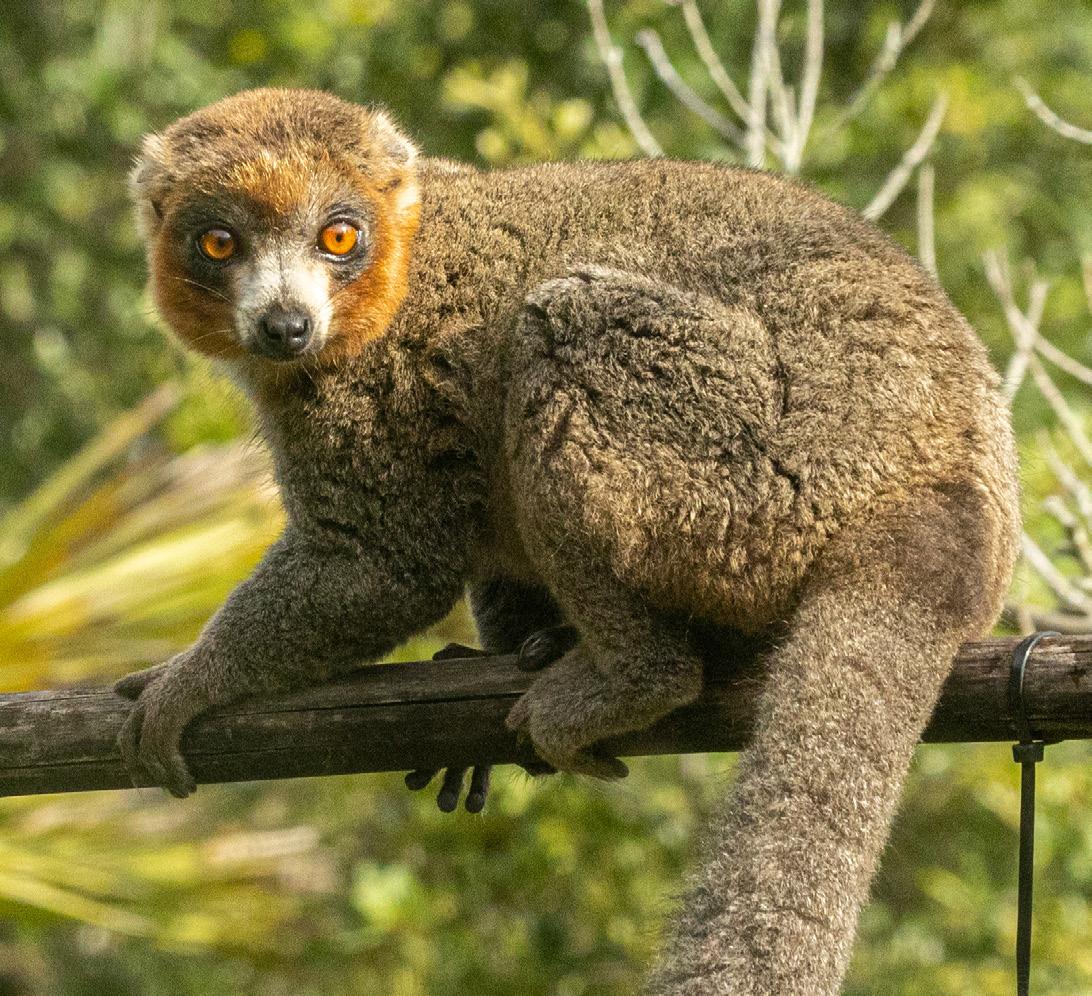
(Eulemur mongoz)
Earlier this year, we celebrated our first mongoose lemur birth. The breeding pair arrived in 2019 as a first-time species for the Zoo. Over the last few months, the baby lemur has been nursing well, clinging onto its mother’s back (and sometimes the father) and exploring its surroundings (but never too far). The mongoose lemur is one of only two lemur species to be found outside of Madagascar in the wild, along with the common brown lemur. Humans introduced both species to the Comoros, an archipelago located over 500 miles northwest of Madagascar. Mongoose lemurs are sexually dichromatic, meaning males and females have different coloring. While both are mostly all gray-brown, females have white “beards” (the fur beneath their chin and around their heads) and males have reddish-orange beards. A male will be born with a white beard and will grow into his new beard at six weeks old.
WHAT'S NEW
Photos pg12: John Reed 10 WILD MAGAZINE • FALL 2023 • JACKSONVILLE ZOO AND GARDENS
Ring-tailed lemur
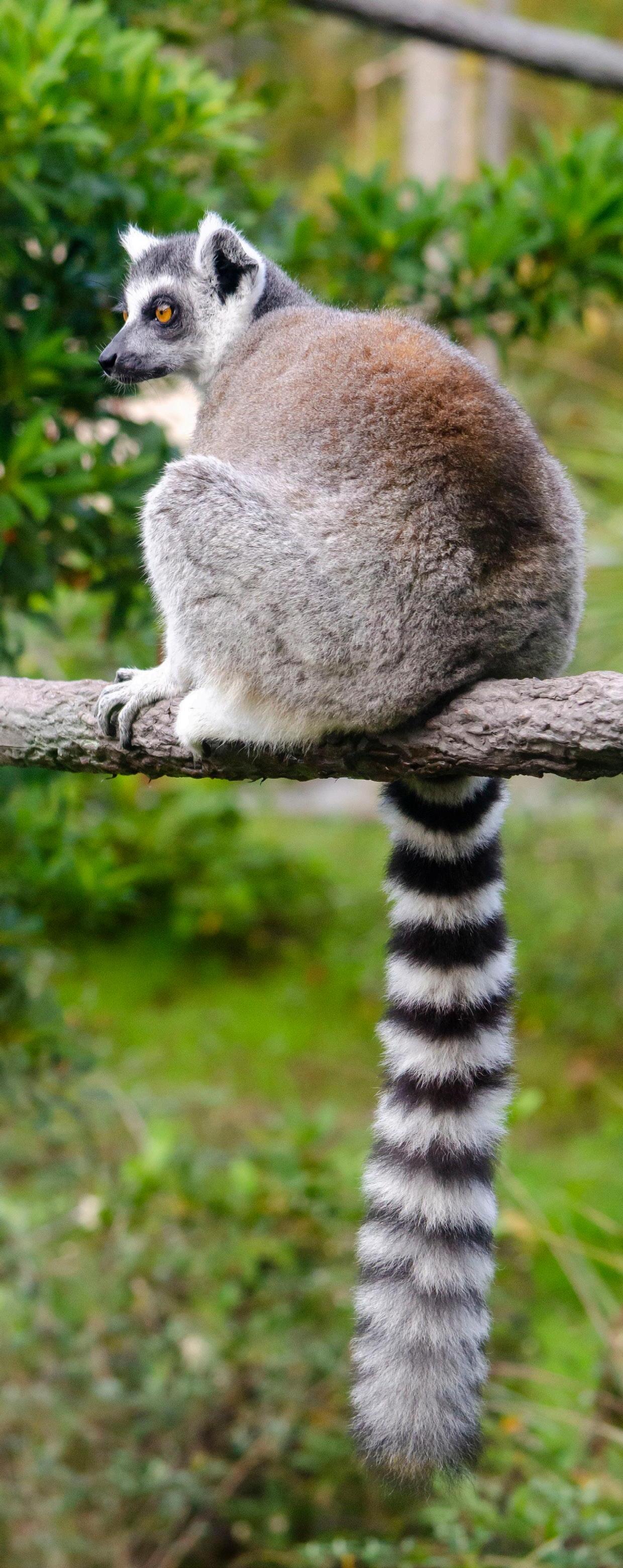 (Lemur catta)
(Lemur catta)
The most intensely studied of all lemur species, the ringtailed lemur is also the only species in the genus Lemur. The most popular and easily identifiable, the ring-tailed lemur’s namesake makes it easily stand out among other species. Social creatures, ring-tailed lemurs can live in troops with up to 24 individuals. Their main forms of communication are through vocalizations, facial expressions and scent-markings. Ring-tailed lemurs are one of the most vocal of primates with over 20 distinct types of calls, from purrs to clicks to yaps, each with unique meanings and for different situations such as predator warnings and group cohesion. Their olfactory communication is by far the most intriguing. Both females and males have scent glands for marking territory. But during breeding season, males will rub the tip of their tales with the secretions from those glands and have “stink fights.” The males will wave their tails at their opponent until one stands down or runs away.
April–June 2023
& Hatches African pancake tortoise 0.0.1 African spoonbill 0.0.1 Black-faced ibis 0.0.2 Cownose ray 0.0.5 Eastern bongo 0.1.0 JAGUAR 1.0.0 Magellanic penguin 0.0.5 MONGOOSE LEMUR* 0.0.1 NORTHERN BALD IBIS 0.0.2 PUERTO RICAN CRESTED TOAD†.......................................0.0.8272 Roseate spoonbill 0.0.7 Acquisitions FLORIDA MANATEE 2.1.0 Inca tern 2.1.0 RING-TAILED LEMUR 0.1.0 Legend: 0.1.2 First digit male Second digit female Third digit sex unknown Two digits only represent male and female CAPS = Endangered Species * (Asterisk) = First time at the Zoo †(Dagger) = Released back into the wild WILD MAGAZINE • FALL 2023 • JACKSONVILLE ZOO AND GARDENS 11
Births
ZOOLights is going through a metamorphosis. Connect with nature in a whole new way coming in late November. Stay posted for upcoming announcements in member emails and social media posts.
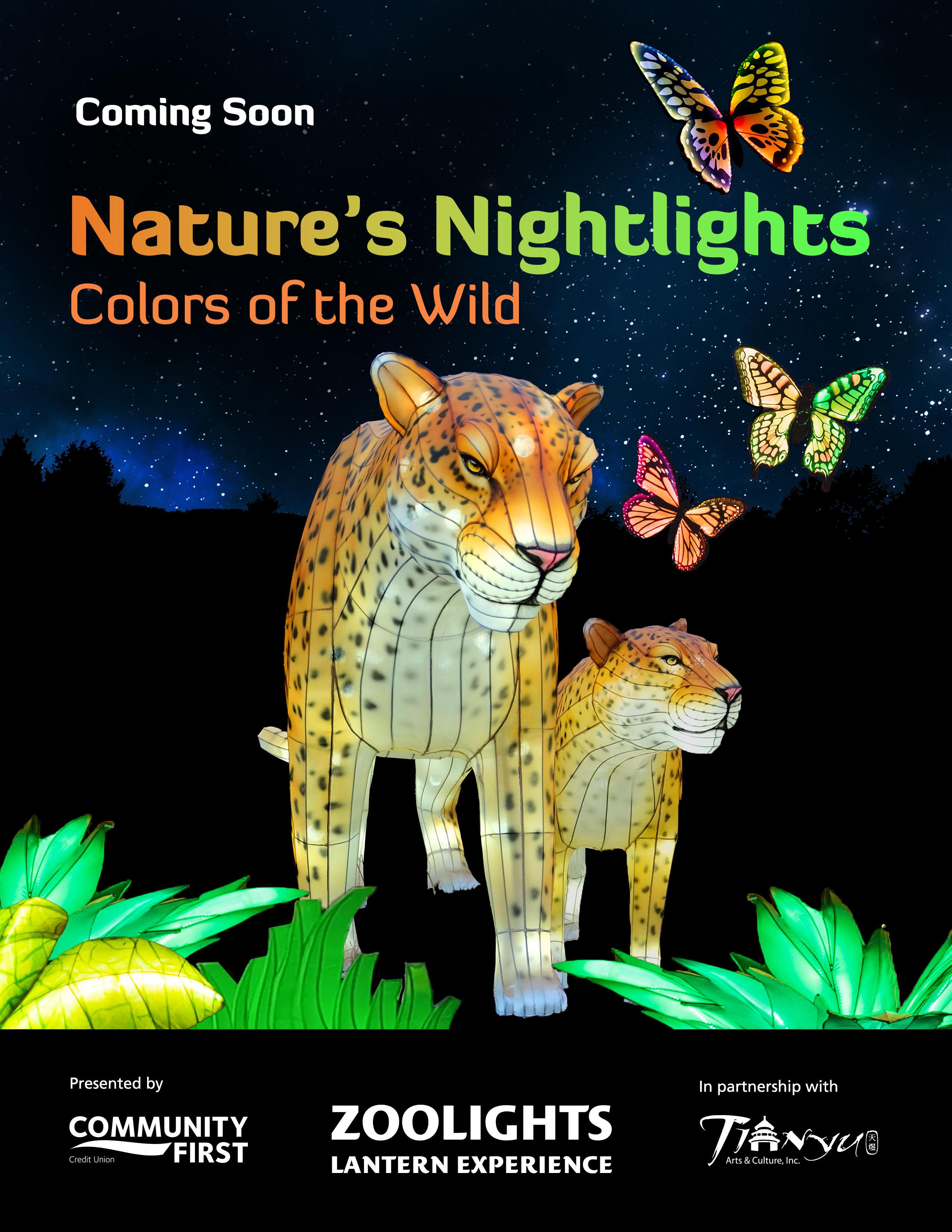
DIGITAL SCAVENGER HUNT
Interactive fun creates a curiosity for learning. As Nature Agents, you can discover, learn and bond together on a digital scavenger hunt using the NEW Explorer Quest app!

DOWNLOAD EXPLORER QUEST APP MANUALLY OR SCAN
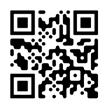 POWERED BY
COMPASS PAIRS WITH MOBILE APP
POWERED BY
COMPASS PAIRS WITH MOBILE APP
Wetland Wonders
By Meara Scanlan, Horticulture Technician I
When you picture the natural beauty of the Earth, what springs to mind is probably the dense canopies of a lush rain forest or the colorful coral of an oceanic reef. Your thoughts may not jump to waterlogged swamps and bogs, but wetlands are unique and invaluable ecosystems that play a vital role in our biosphere and are a haven for a vast array of fascinating wildlife.
Our wetlands are excellent at storing carbon, with some of the highest amounts of stored carbon found in wetland soil. The process of carbon sequestration refers to the achievement of capturing atmospheric carbon dioxide and storing it in organic material. By capturing excess atmospheric carbon, wetlands significantly alleviate the effects of climate change. Wetlands also protect us by acting as a natural water filter, with dense and lush vegetation capturing excess pollutants. The same vegetation is excellent at taking in excess water during extreme storms, serving as a flood buffer. Wetlands significantly reduce the danger of flooding in surrounding areas, which is especially beneficial here in Florida!
Wetlands are bursting with a wide array of fungal activity. When monitoring the health of a wetland, scientists often look at fungi for valuable insights on any environmental changes. A small fluctuation in water level

or a slight change in nutrient density can wipe out an entire species of fungi and make way for a new one. Wetland fungi populations often partake in symbiotic relationships, weaving themselves closely throughout many organisms in the wetlands. The slightest indication of change in one organism could spread throughout a whole family of fungus, making them great aids in determining when conservation efforts need to be implemented. Unfortunately, wetlands are threatened by pollution and degradation for land development. Because wetlands are so excellent at storing carbon and filtering excess water, altering the natural hydrology of wetlands can result in soil degradation, water contamination and the release of excess carbon. This lost source of carbon stores worsens climate change. Sustainable land-use practices and reforestation programs are accessible options that are incredibly valuable to keep our wetlands doing what they do best.
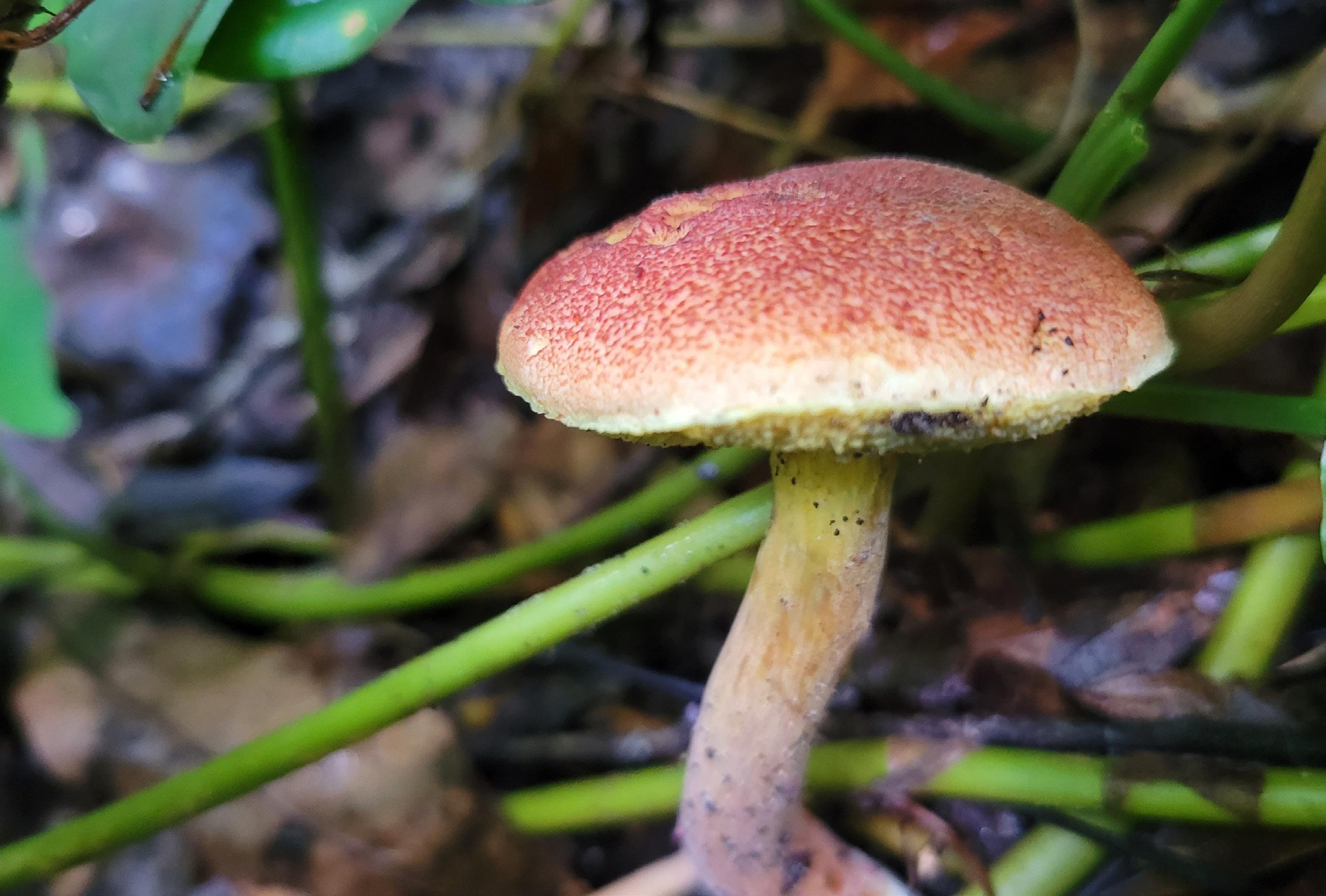
GARDENER'S CORNER
14 WILD MAGAZINE • FALL 2023 • JACKSONVILLE ZOO AND GARDENS
JAX Zoo Tube
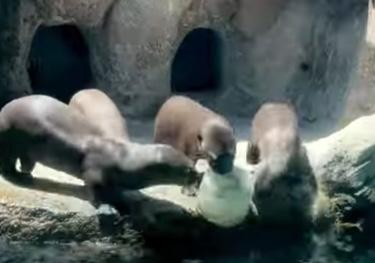
Baby Banks Gets Bolder Every Day
Cubdate Banks is Eating Meat!
Babette Bops Banks
Baby Banks Makes His First Game Day Pick
See Baby Banks Now!
Behind the Scenes Experiences at the Zoo



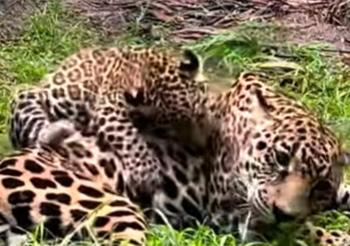
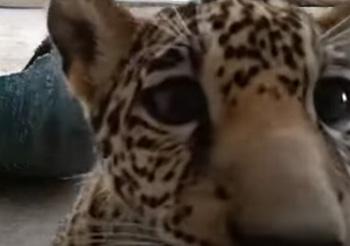

When Florida Gives You Heat, Make Ice Pops
To see additional videos please visit our YouTube Channel
VIDEOS
WILD MAGAZINE • FALL 2023 • JACKSONVILLE ZOO AND GARDENS 15
Puerto Rican Crested Toad
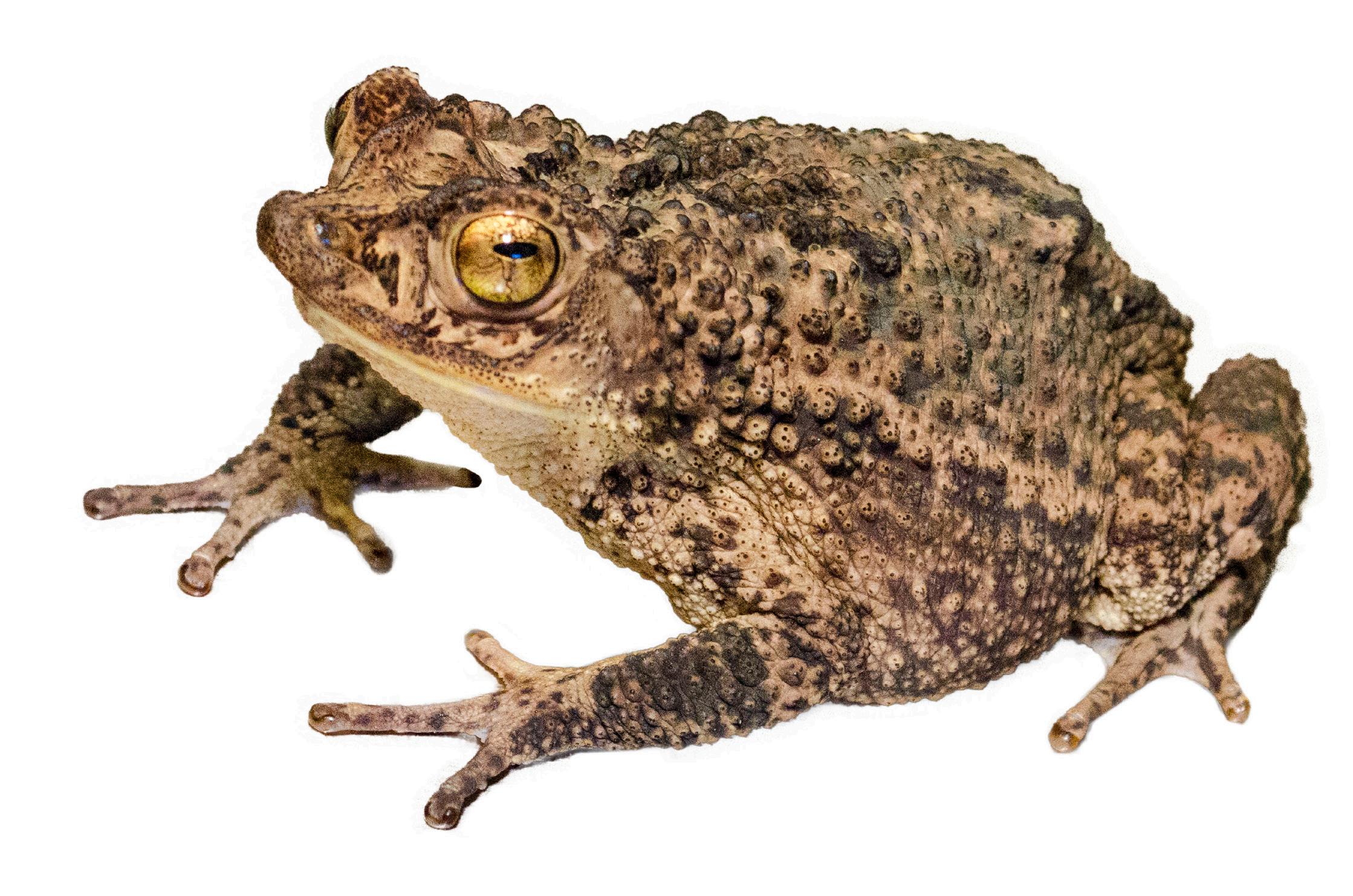 By Shannon Mcneil
By Shannon Mcneil
In 1984, the Puerto Rican crested toad became the first amphibian Species Survival Plan (SSP) program under the Association of Zoos and Aquariums (AZA). It is currently the longest continuous-running reintroduction program for any amphibian species.
Though every animal is important and should be saved from extinction, this is the only native toad on the island of Puerto Rico.

CONSERVATION
16 WILD MAGAZINE • FALL 2023 • JACKSONVILLE ZOO AND GARDENS
The primary threats to the Puerto Rican crested toad are habitat loss due to alteration, fragmentation and rising sea levels as well as the introduction of invasive species like the marine toads and Cuban tree frogs.
This year alone, Jacksonville Zoo and Gardens has sent 8,272 tadpoles produced by two pairs of toads to the Puerto Rican Crested Toad Conservancy for reintroduction. Breeding usually fails to be spontaneous for these animals and in most cases exogenous hormones are used to promote reproductive behaviors. Production must also be timed to ensure that toads are tadpoles for shipment and that their breeding is timed to coincide with the rainy season in Puerto Rico when the tadpoles are released. The tadpoles are shipped in regular shipping as you would for any live animal like a fish. Once the tadpoles are sent to Puerto Rico, they are acclimated in man-made ponds, where they are monitored until they metamorphose and disperse.
Currently, five man-made ponds, also known as reintroduction sites, are in historical habitats and separate from the last remaining wild population in the south. Guánica is one of the five reintroduction sites.

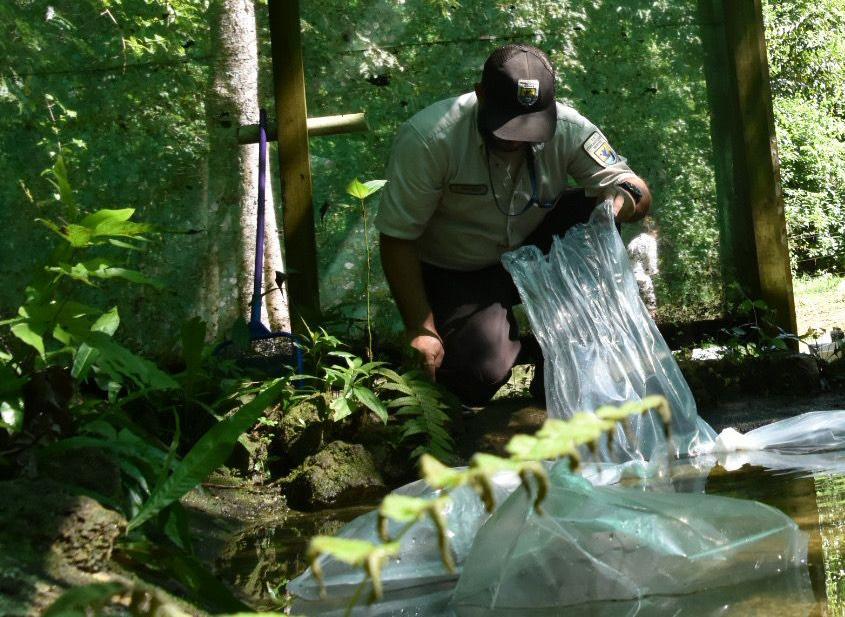
For the past 35 years, wild populations in Guánica have fluctuated from 300 to 3,000 individuals, though they are difficult to monitor due to their fossorial lifestyle and are only observed during large rain events for breeding. It is hard to know exactly what the population numbers are. The International Union for the Conservation of Nature (IUCN) classifies the toad as critically endangered in 1987 with an estimated 1,000 to 3,000 adult toads remaining in the wild. Since 1992, more than 600,000 captive hatched tadpoles have been reintroduced from more than 20 zoos across the country.
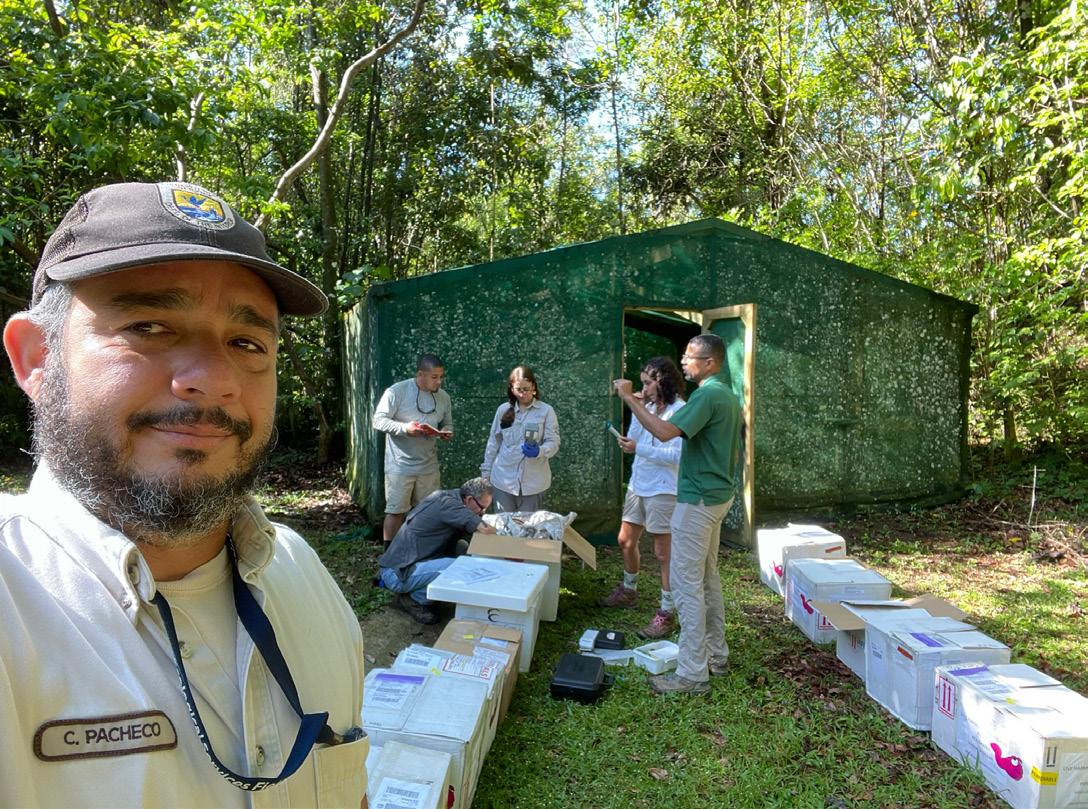
WILD MAGAZINE • FALL 2023 • JACKSONVILLE ZOO AND GARDENS 17
Advanced Inquiry Program
Showcasing Graduate Students
By Jamie Lynn Lankenau, Community Engagement Supervisor
We are one of 10 zoos and botanical gardens across the country to offer the Advanced Inquiry Program (AIP), a graduate degree program offered through Miami University in Oxford, Ohio, aimed at igniting social and ecological change. The AIP engages students in experiential education opportunities at the Zoo alongside Miami University’s online coursework from multidisciplinary backgrounds to earn a Master of Arts in Conservation Biology. Some of ourdiverse student population work in the zoo and aquarium field, while others are teachers, business professionals, marketing professionals or community leaders, each aiming to contribute to conservation efforts in their communities.
Each AIP cohort is named after a Florida native species. The fourth cohort, which began their studies in the summer semester of this year, is the Longleaf Pine cohort. To celebrate three and a half years of AIP at the Zoo, we are highlighting some of the incredible work our students have accomplished!
Alyssa Knowlton, a member of the Manatee Cohort and member of our first graduating class in December 2022, studied how companies can support conservation and sustainability goals. During her time in the program, Alyssa conducted studies on how local coffee shops versus national chains contribute to singleuse plastic waste. After a course trip to Belize where she visited a nature preserve of cultural and conservation significance, she conducted a study on how companies can purchase land to contribute domestically to conservation efforts here in the US. Additionally, she completed an independent study on how Jacksonville’s local transit agency (JTA) reports metrics to measure environmental impact of public transportation to further municipal sustainability efforts. Alyssa was a Zoo employee at the beginning of her time in the AIP and is now a Data Analyst for the Environmental Research and Education Foundation, a nonprofit organization conducting research to enable innovation in sustainable waste management.
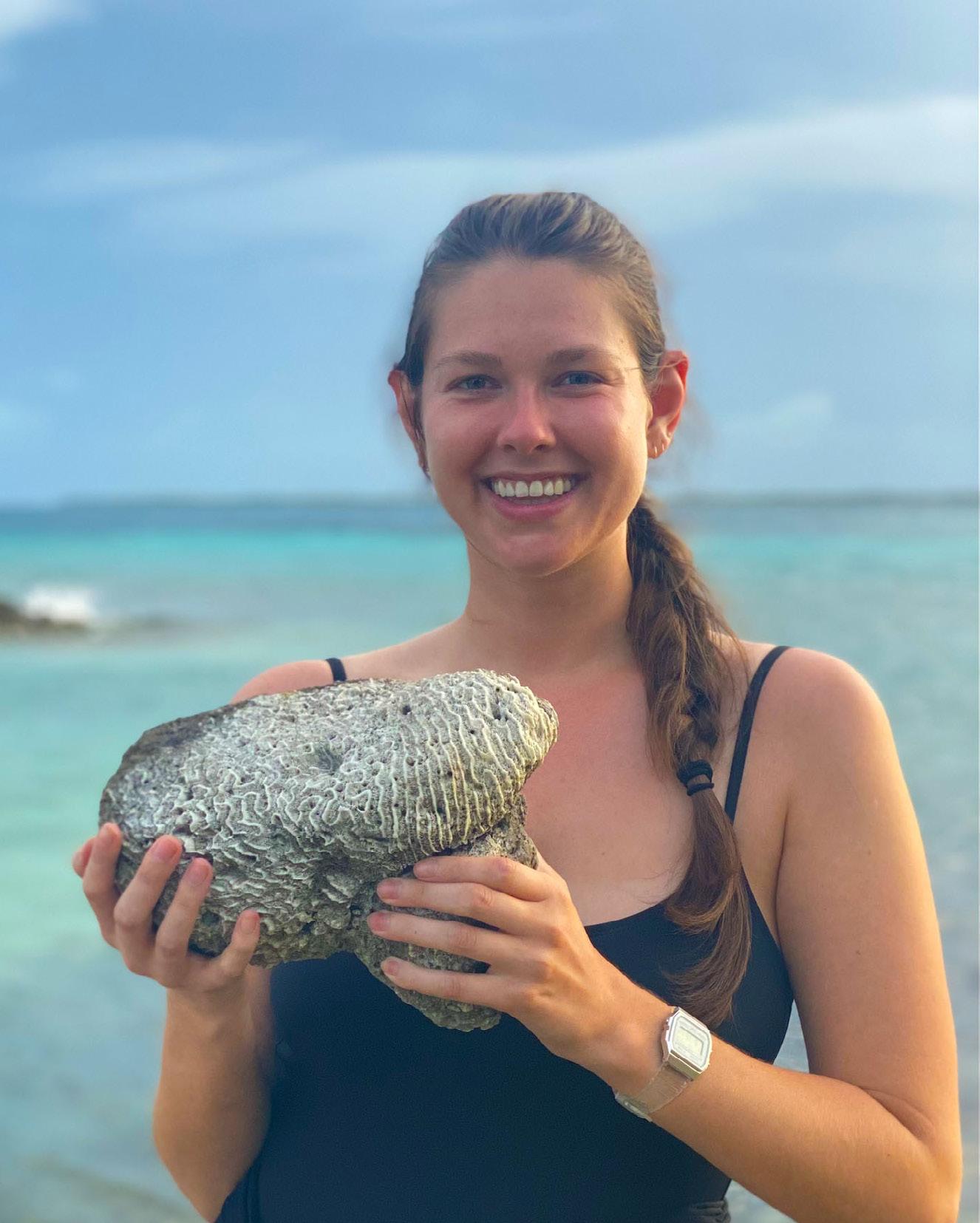
EDUCATION
18 WILD MAGAZINE • FALL 2023 • JACKSONVILLE ZOO AND GARDENS
Noah Koflowitch is a current AIP graduate student in the Gopher Tortoise cohort and is fascinated in all things reptilian. He is focusing his studies on cultural understandings of macropredators in freshwater ecosystems. As a student, he has utilized his creativity to create a video game and website about bull shark ecology and conservation in the face of environmental change. He traveled to India as a student to study species, deities and communities. Noah has conducted studies on crocodilian behavior at the St. Augustine Alligator Farm and aims to improve humanto-crocodilian relationships through general research and outreach. Noah is currently a field biologist for the Orlando-based bio-technology consulting company, Biotech. He is set to graduate from the AIP in December 2023.
Viviana Moreno is a current AIP graduate student in the Wood Stork Cohort. Viviana is focusing her coursework on bridging the gap between science and non-science communities of all ages through creative writing. Viviana is a published poet and has established the blog, Simply Science, which she started after a course expedition to the Everglades National Park. Her blog documented the adventure and aims to spotlight other outdoor adventures and instill a reverence for nature among readers. As a student, she aims to collaborate with fellow classmates who are teachers to publish a children’s book on climate change. Viviana serves on Miami University’s Diversity, Equity and Inclusion Student Advisory Board and expects to graduate in December 2024.
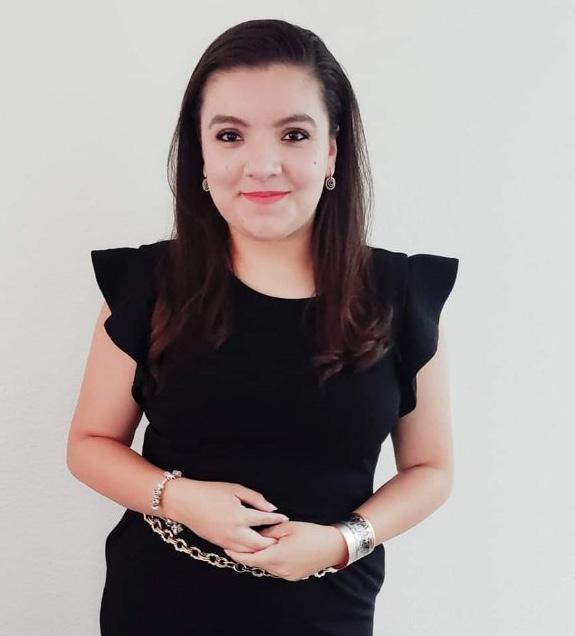
Now Recruiting
We are now recruiting interested students to join our fifth cohort. Classes begin in May 2024. If you are interested or know someone that might be, email: AIP@Jacksonvillezoo.org to learn more.
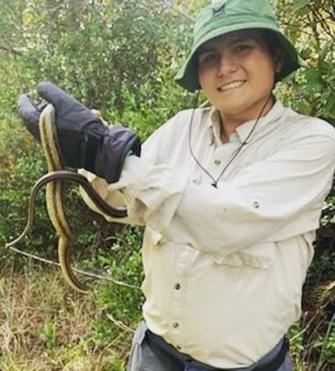
EDUCATION Event Calendar
Natures Newbies
Ages 1–3
Child-directed free play, storybook, animal encounters and more.
Learn More
Zoo Tots
Ages 3–5
Focusing on specific animal themes to engage your preschooler as he or she learns about the natural world, each program emphasizes positive and engaging interactions with animals, activities, storybooks, songs and more.

Learn More
Stroller Safari
Ages 0–3
This class meets monthly on Tuesdays and Saturdays from 8:45 a.m.–9:30 am. Pack your little one up in a stroller and join us for an educational and fun stroll through the Zoo.
Learn More
Wild Family Workshops
Ages 4+
The entire family can join us each month for this fun and engaging program that teaches kids about wildlife and conservation while participating in hands-on, naturebased activities.
Learn More
Outdoor Explore!
All Ages
Our free family nature club meets each month in a different location to explore the green spaces around our city and interact with the natural world.
Learn More
Family Wild Walks
All Ages
Knowledgeable Education Guides will lead your family group on a private experience filled with fun facts and animal stories.
Learn More
Spooktacular Zoo Camp
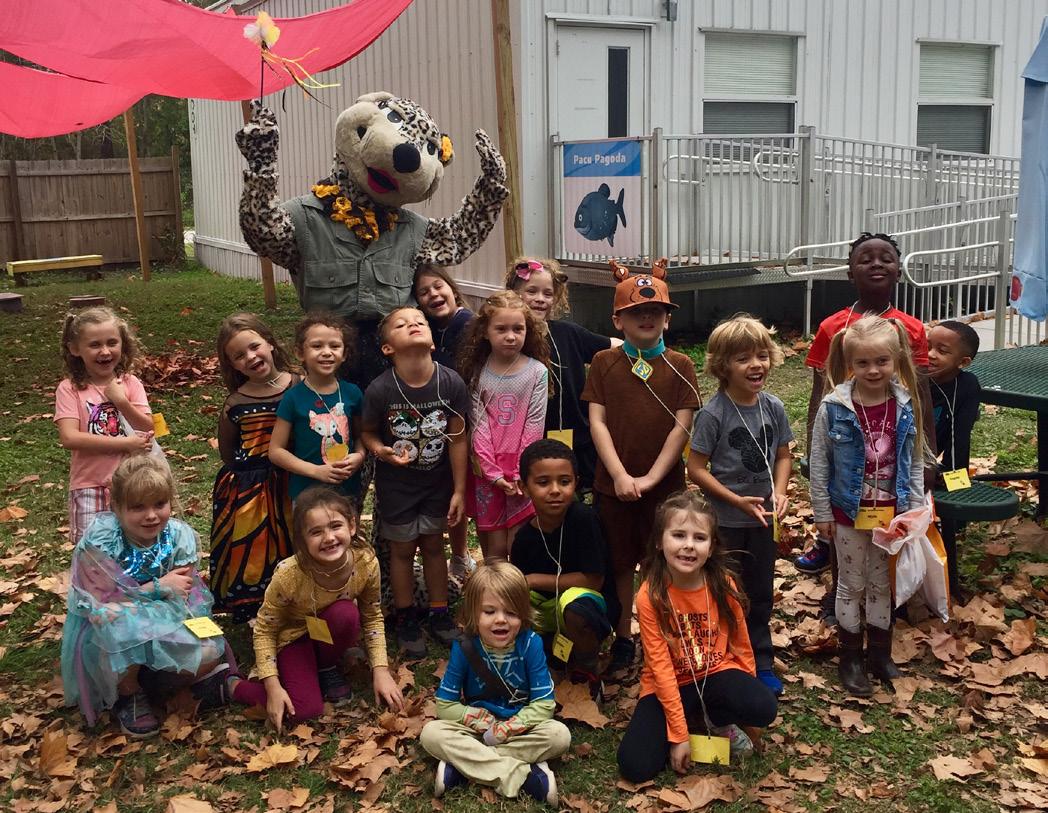
K–5th grade
Saturday, October 28
Where else can science be both spooky and fun? At the Zoo of course. Join us for a Spooktacular day of Zoo Camp!
Learn More
Winter Zoo Camp (K-5th grade)
December 27–29
Don't spend winter break sitting at home. Join us for three fun-filled days of Zoo tours, animal encounters, crafts, activities and more!
Learn More
20 WILD MAGAZINE • FALL 2023 • JACKSONVILLE ZOO AND GARDENS

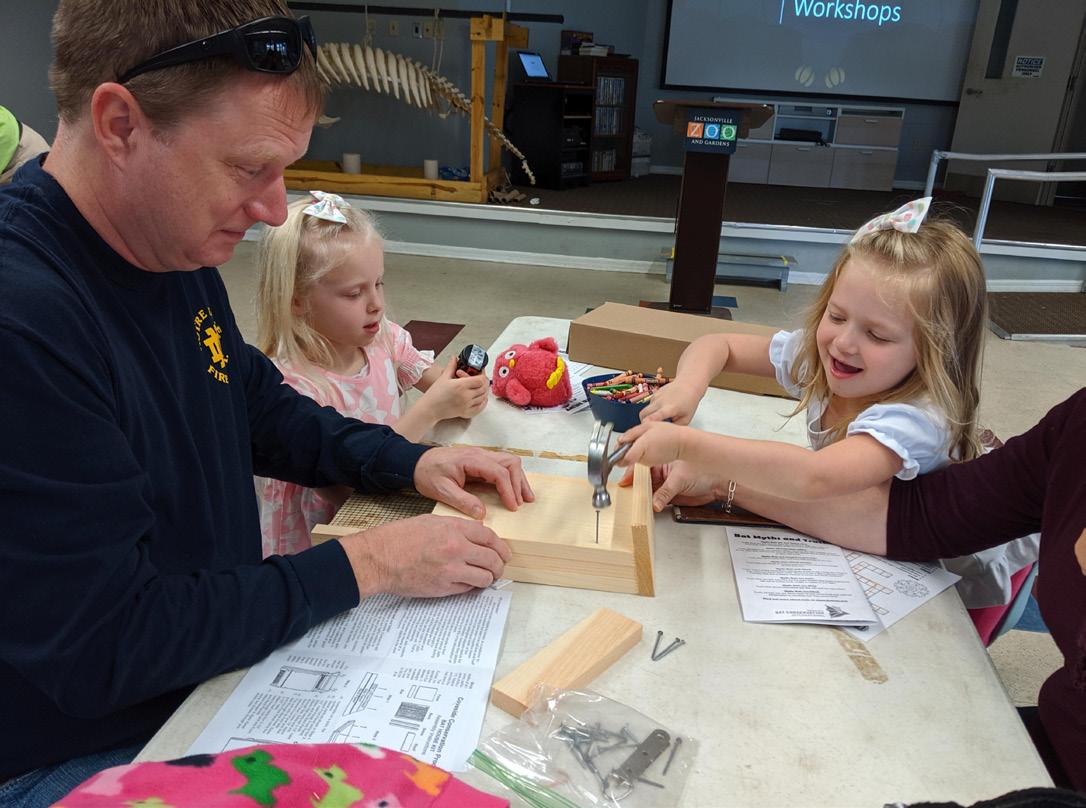
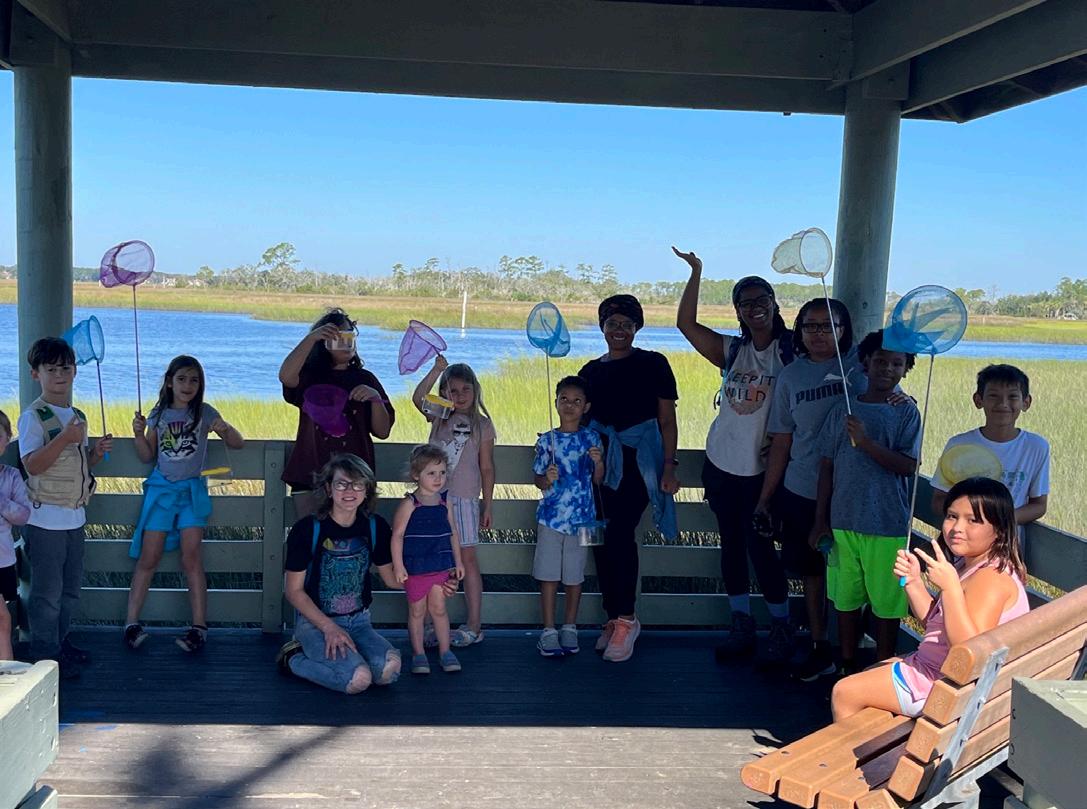
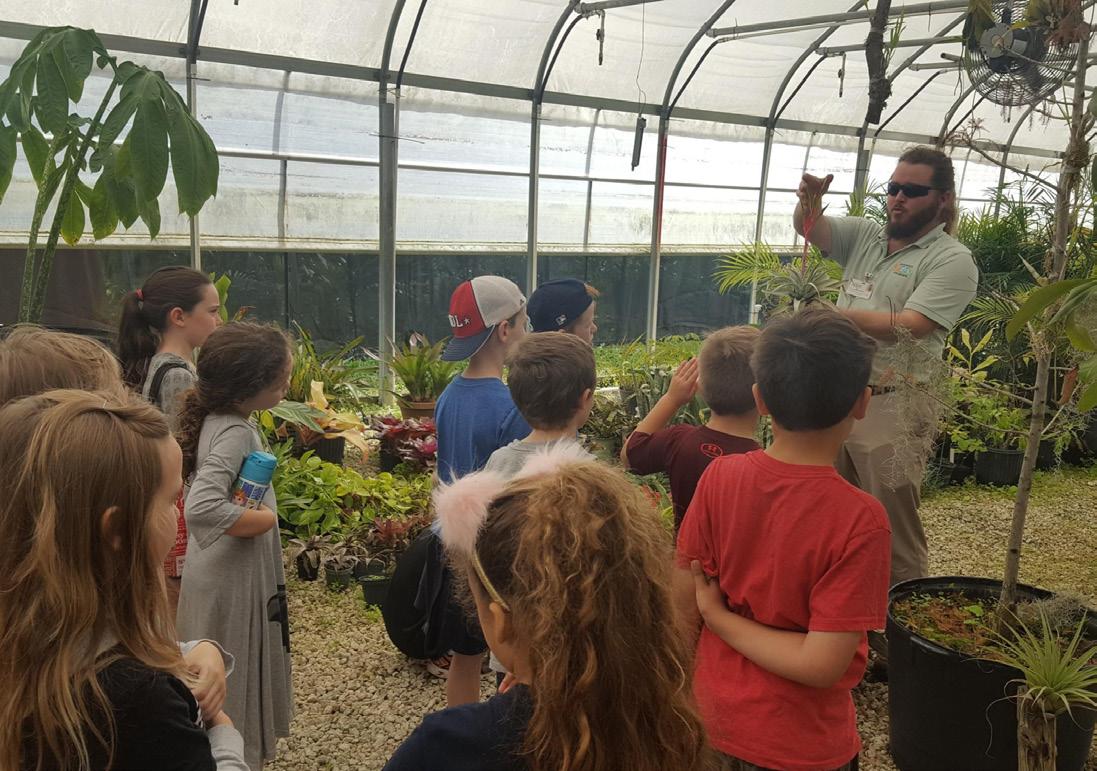
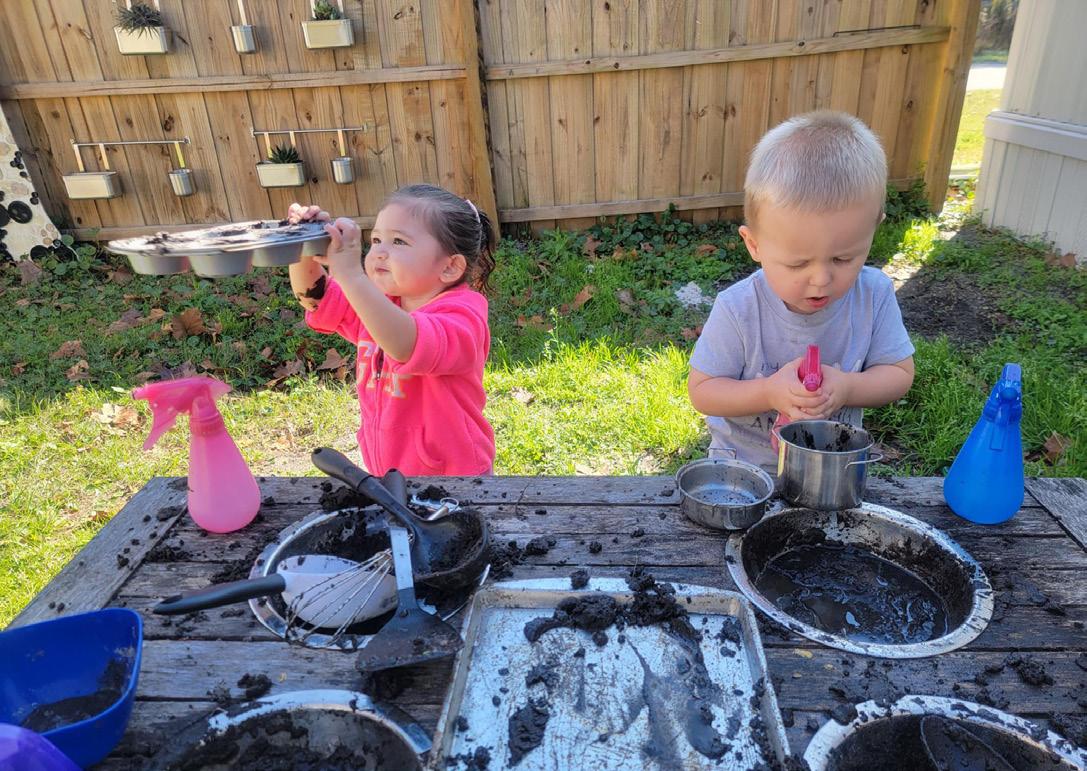
WILD MAGAZINE • FALL 2023 • JACKSONVILLE ZOO AND GARDENS 21
Banks — Jaguar Cub
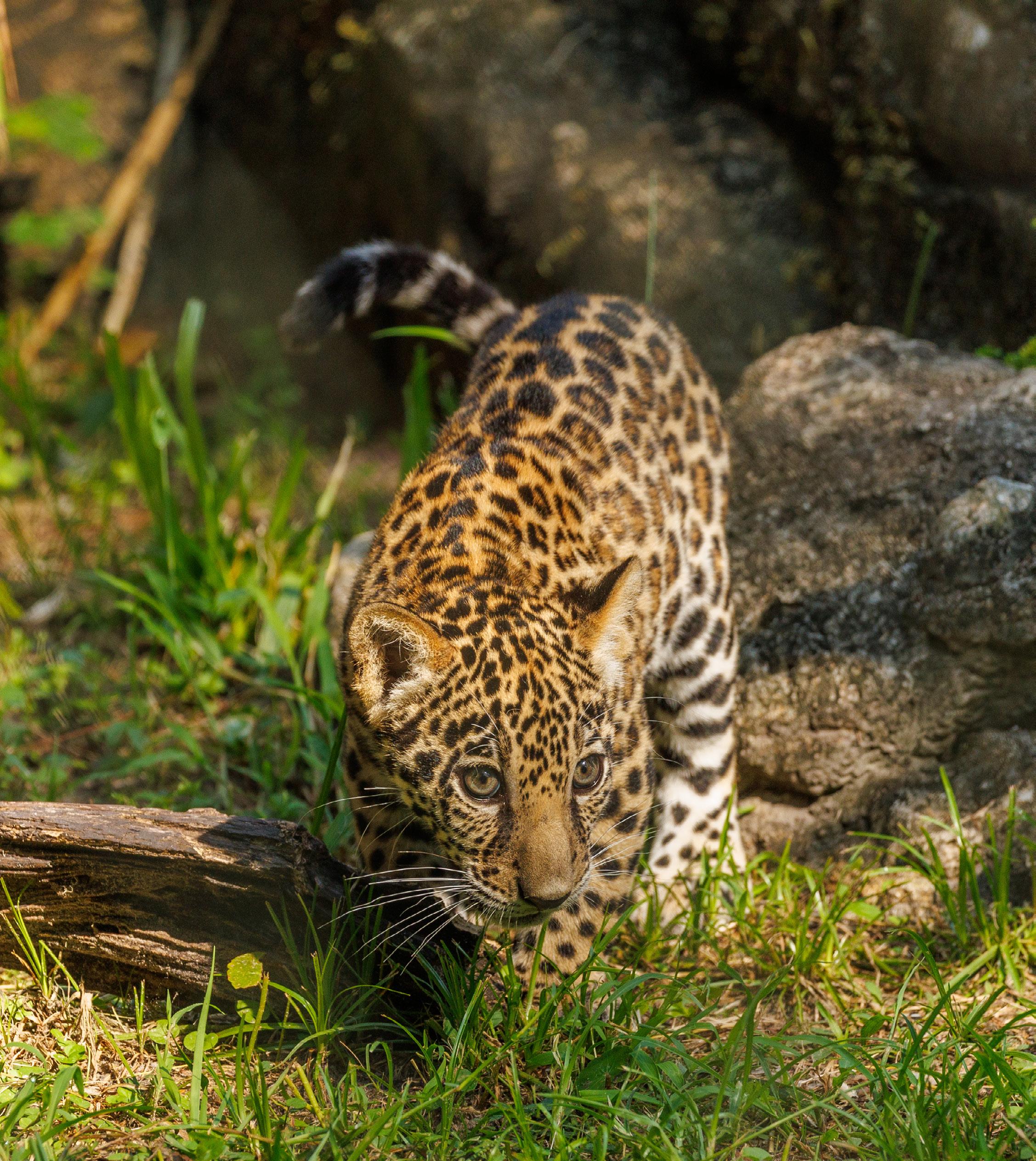
ANIMAL HIGHLIGHTS ANIMAL HIGHLIGHTS
22 WILD MAGAZINE • FALL 2023 •
ZOO AND GARDENS
Photos: John Reed
JACKSONVILLE


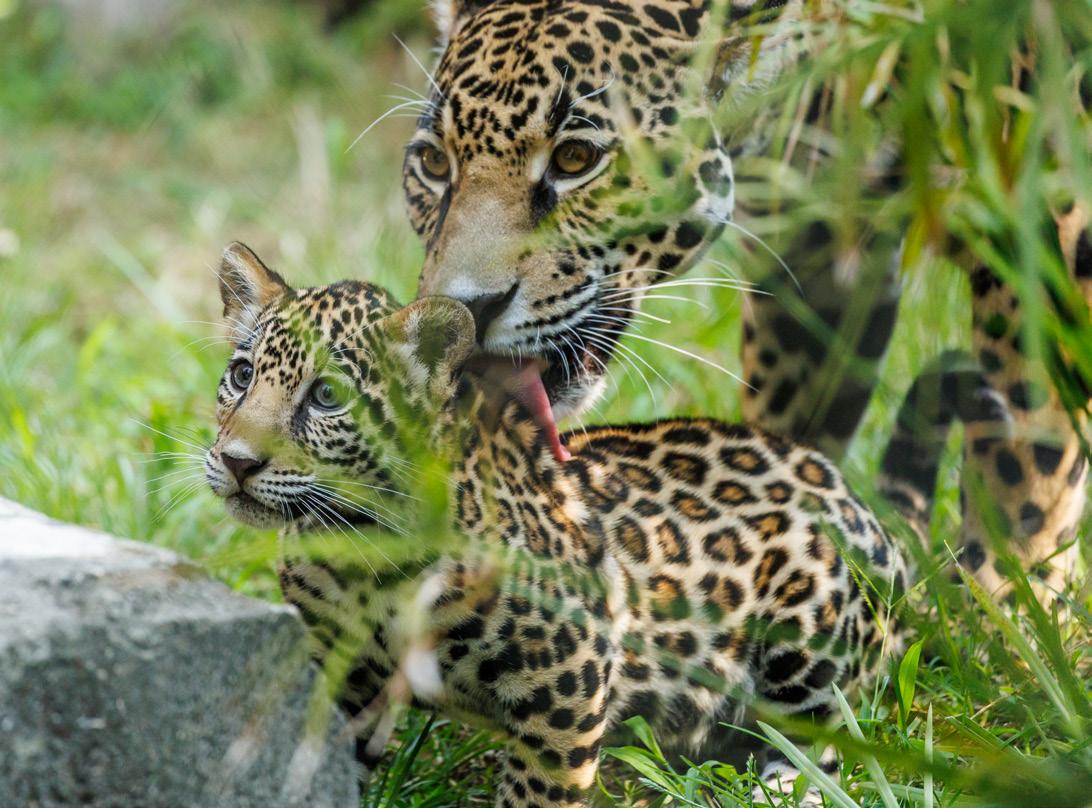
WILD MAGAZINE • FALL 2023 • JACKSONVILLE ZOO AND GARDENS 23
Some Thoughts on Focus
By John Reed, Photography Volunteer & Snapshot Society Instructor
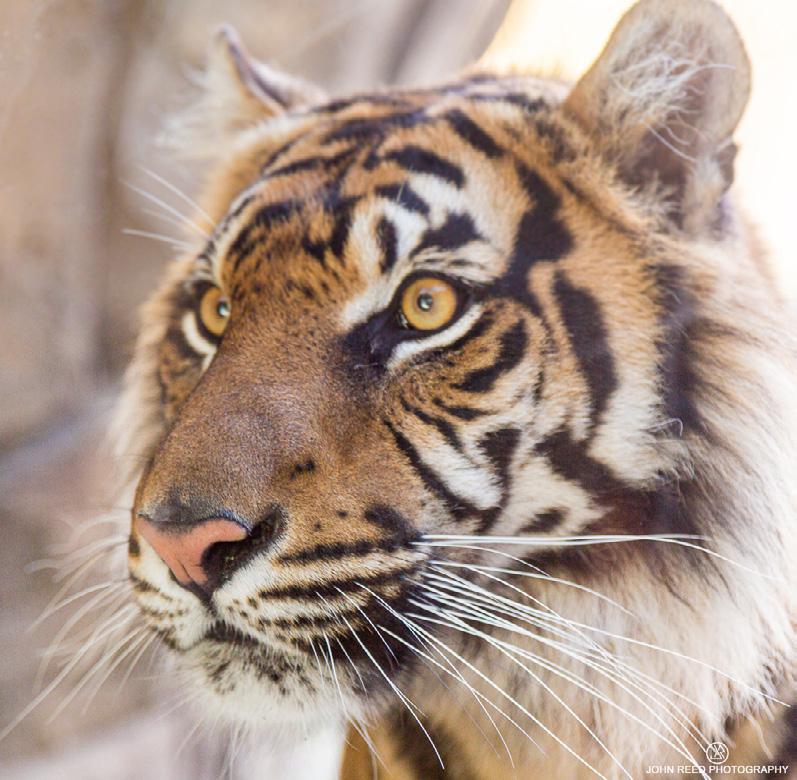
One of the biggest complaints people seem to have about their photos is that they are not sharp. There are many reasons for this. Camera movement, subject movement and even ISO and exposure to some extent, can all lead to less than tack sharp images. Camera movement and subject movement are shutter speed issues, and we’ll save shutter speed for another time. Let’s talk today about focus and some suggestions to improve it.
Here are suggestions to keep in mind that may help: Remember, autofocus is designed to concentrate on whatever is closest to you. I’m sure you’ve tried to photograph an animal on the other side of a fence and found brilliant shots of the fence! If there is something between you and your subject, you may have to focus manually. For that to work well, you must make sure your viewfinder is adjusted to your vision. This is called a diopter adjustment and it makes sure that the sharpness you see in the viewfinder will match the sharpness of the photo. This must be set to your eye when using manual focus. It’s usually a simple adjustment and your camera manual will provide instructions.
Another impact of focusing on what is closest is the trouble with getting the subject’s eyes sharp, which is critical. Subjects with long heads like horses and giraffes, or birds with long bills, can be a problem. When they are looking directly at you,the camera will focus on the end of their nose/bill and the eyes get blurry. The closer they are, the more likely this will be a problem. You must focus past the nose and on the eyes or close your aperture for more depth of field. Even animals without long faces, such as big cats, can have the same problem. Look at the photos and note that both the whiskers are much sharper than the eyes, especially the zebra.

Image sharpness can be subjective. What is sharp enough for one person may not be sharp enough for another. Still, sharpness is a genuine, visible factor with which to be concerned.
Most people now use autofocus and that's fine because it does work so well. Even with perfect vision, the camera can most always focus faster than we humans can focus manually. Still, we will want to understand autofocus’ limitations as well as the different ways we can configure it to work. All the various focus options available to you now are so vast that this is up to you and your manual.
I hope this information is helpful to you in our neverending quest for sharp photos! Be well.
SNAPSHOT SOCIETY
24 WILD MAGAZINE • FALL 2023 • JACKSONVILLE ZOO AND GARDENS
Photos: John Reed
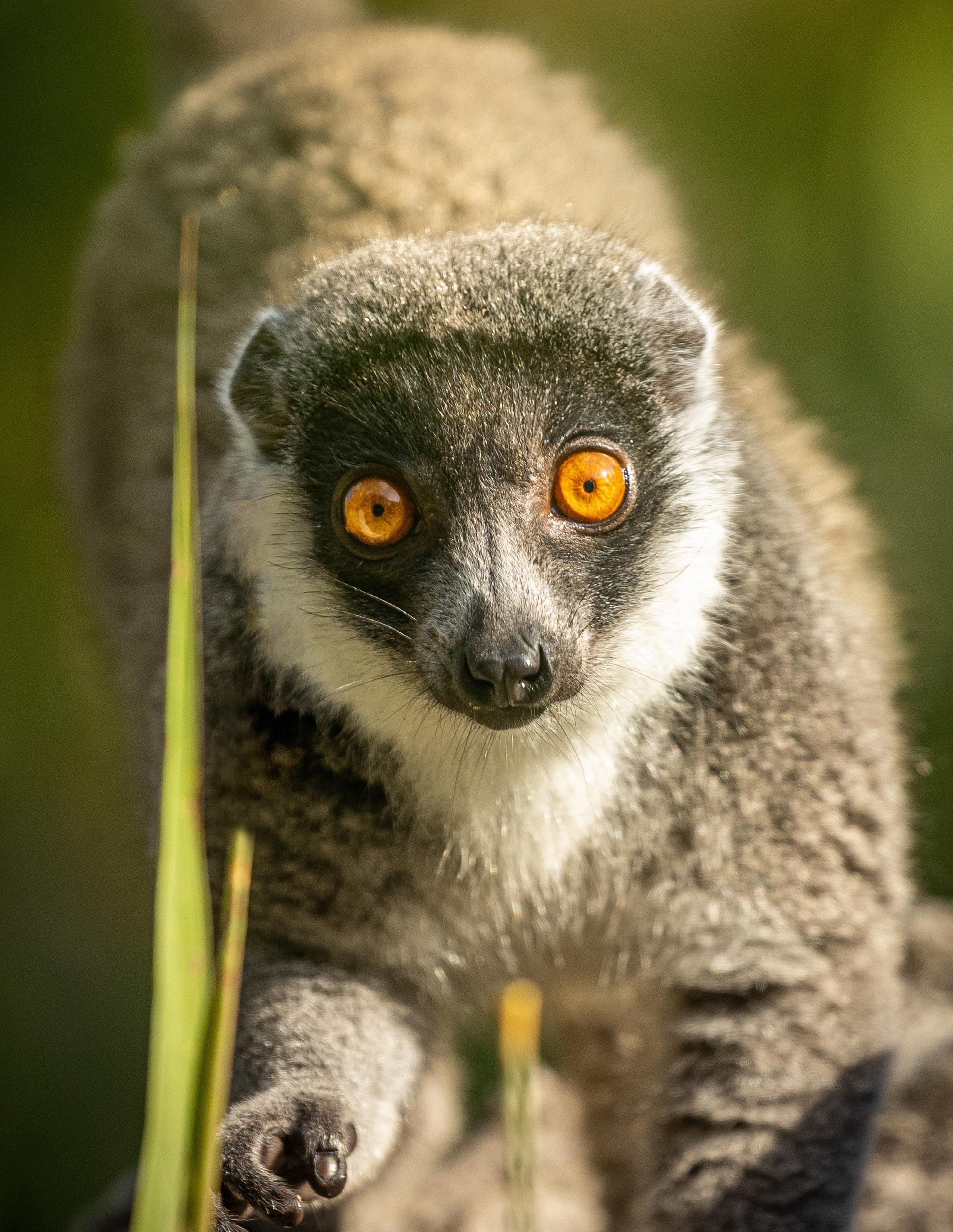
Riverview Garden
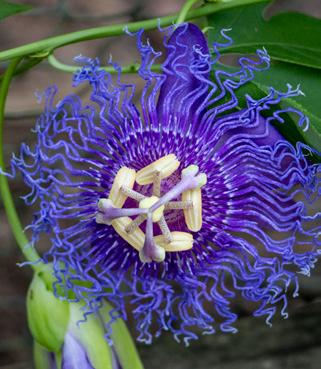

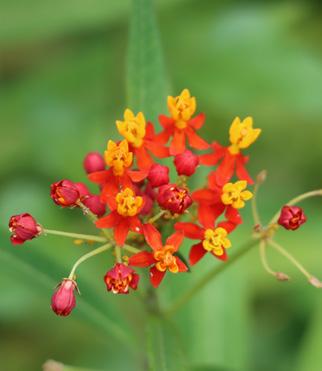
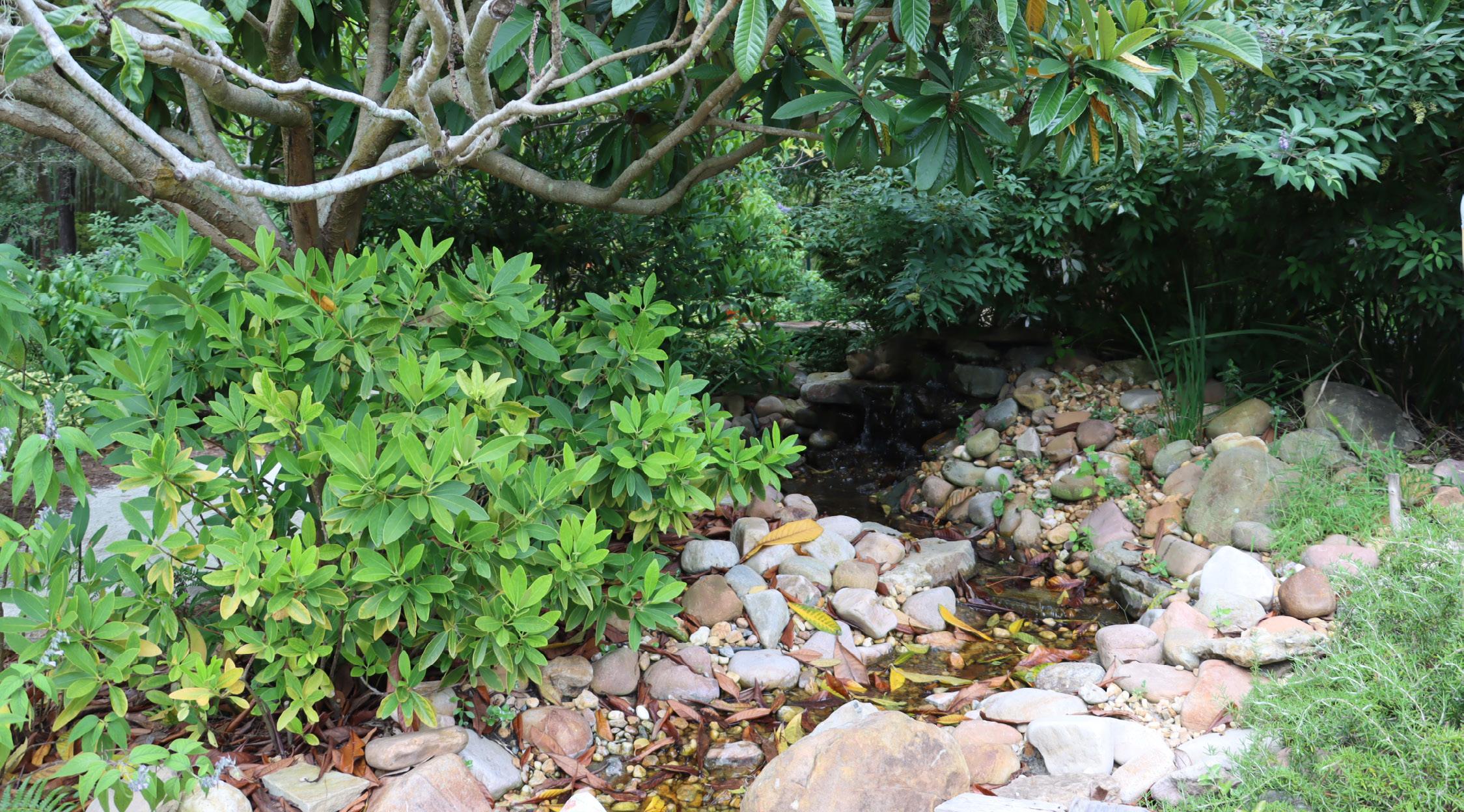
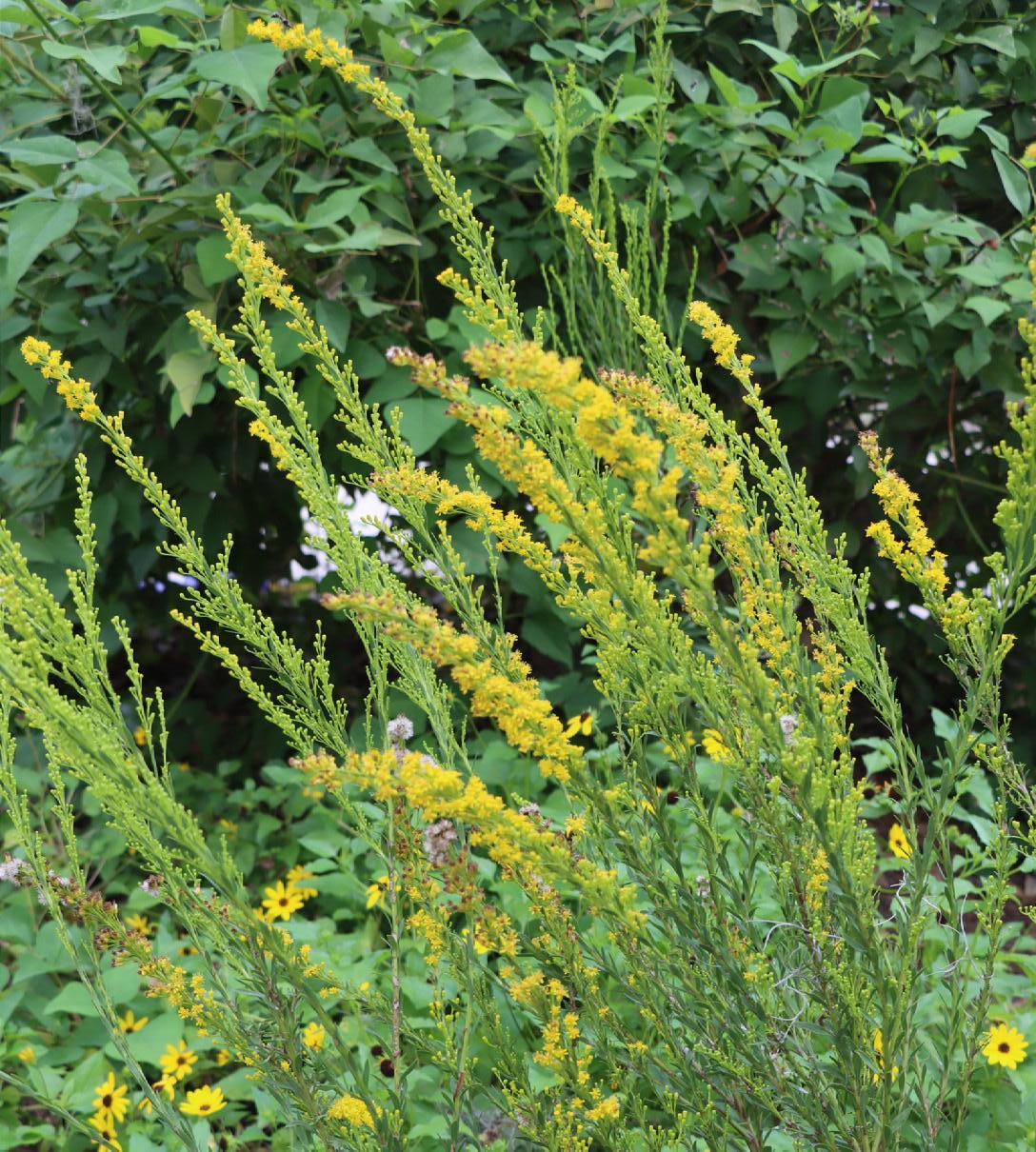
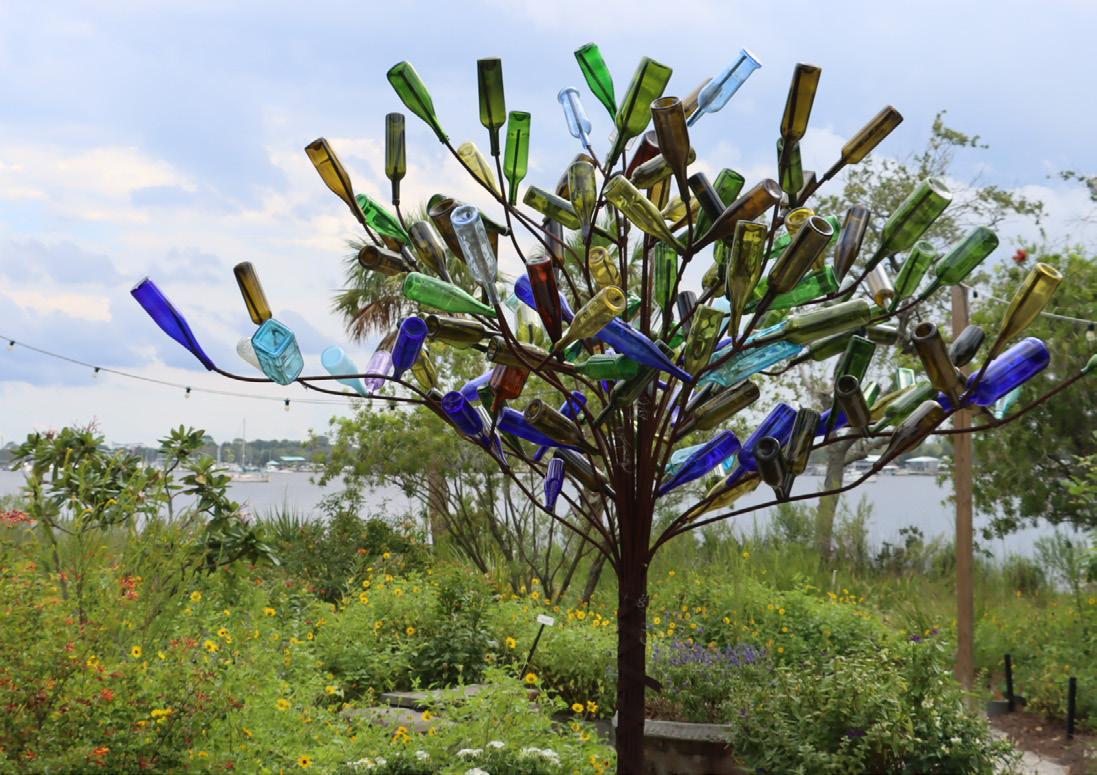
GARDEN HIGHLIGHT
26 WILD MAGAZINE • FALL 2023 • JACKSONVILLE ZOO AND GARDENS
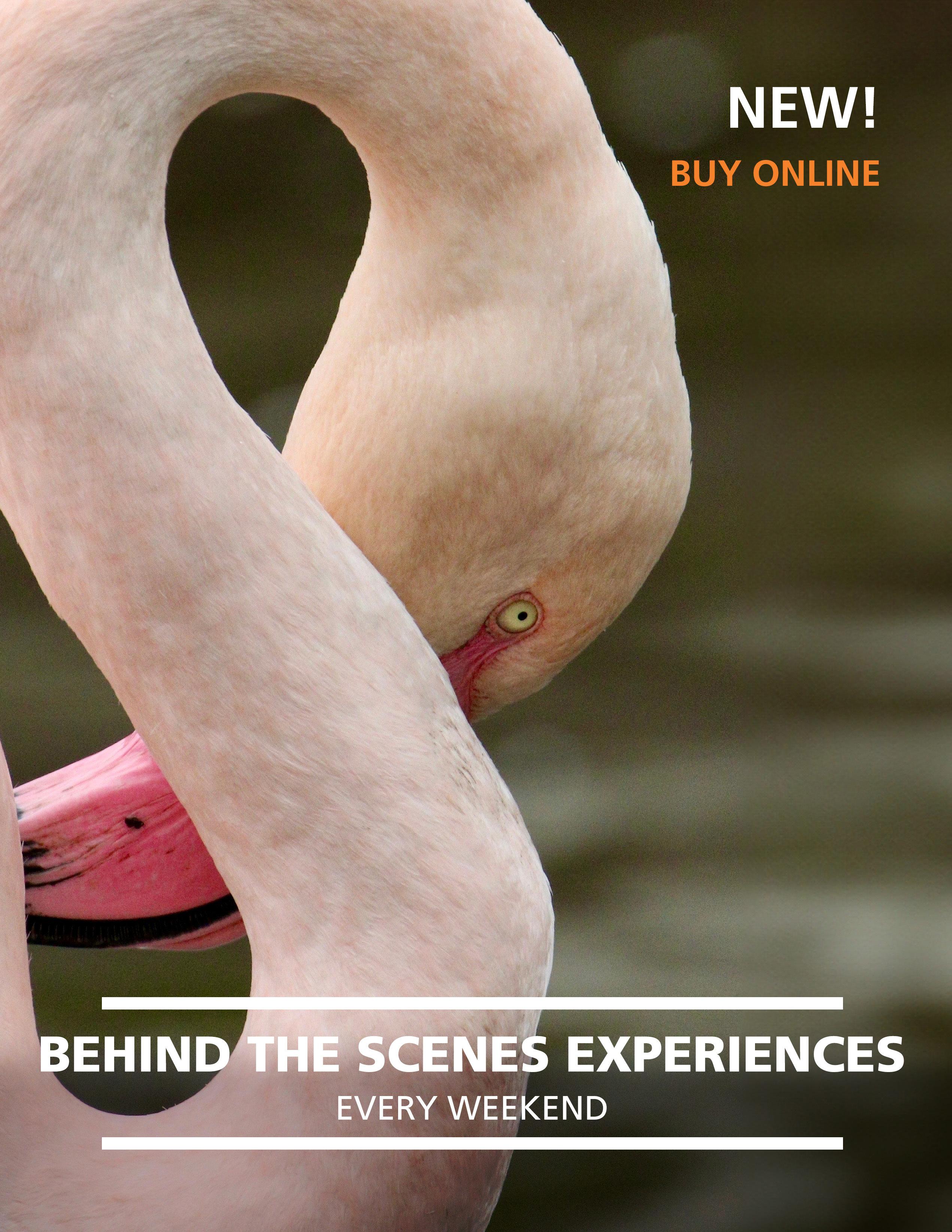
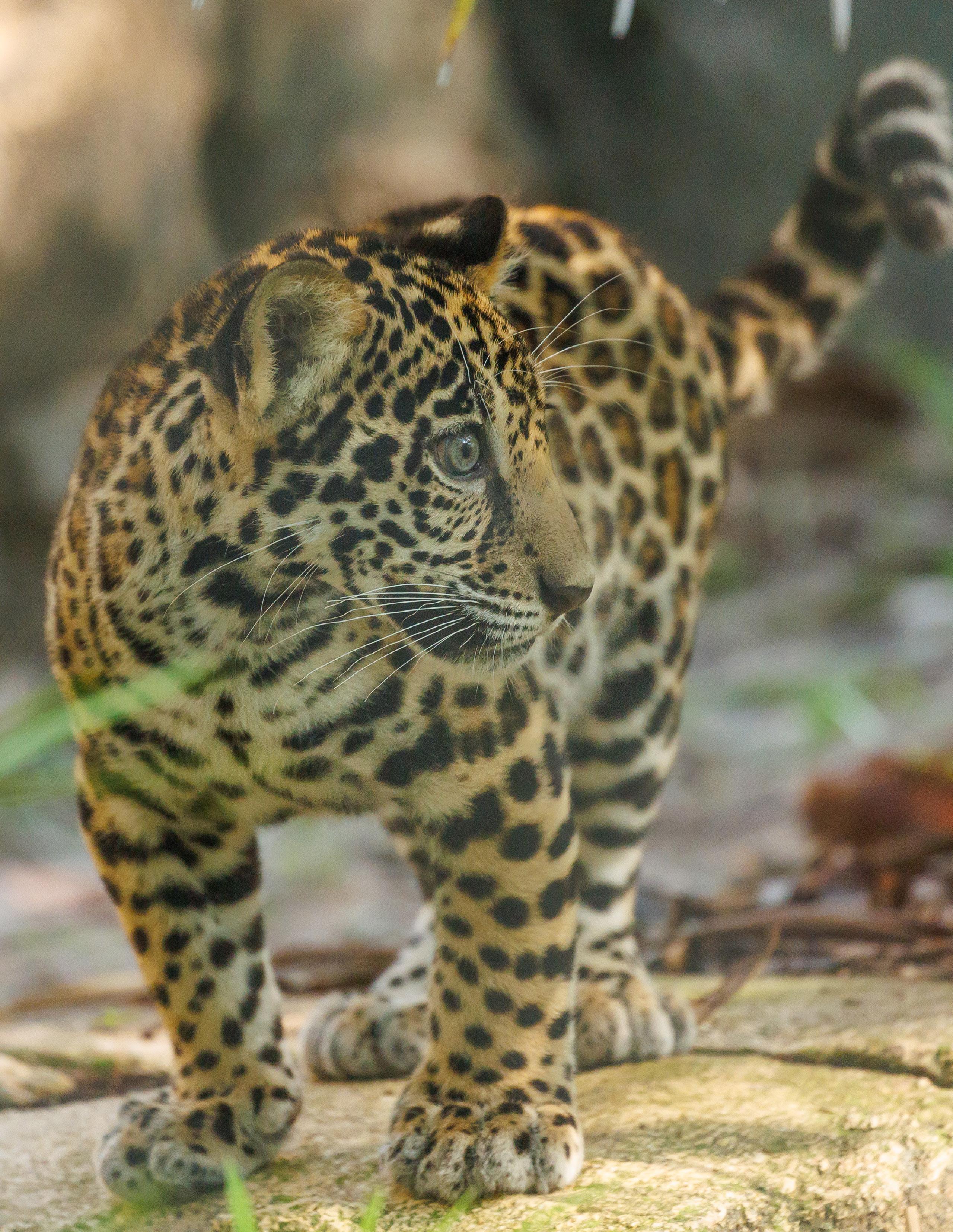 Photo: John Reed
Photo: John Reed





















 (Lemur catta)
(Lemur catta)


 POWERED BY
COMPASS PAIRS WITH MOBILE APP
POWERED BY
COMPASS PAIRS WITH MOBILE APP








 By Shannon Mcneil
By Shannon Mcneil




























 Photo: John Reed
Photo: John Reed














